Malaysia is home to an incredibly diverse range of birds, with more than 700 species found across the country.
From the vibrant, colorful tropical birds of the rainforest to the majestic raptors of the mountains, Malaysian birdlife is renowned for its beauty and abundance.
Whether you’re an experienced birdwatcher or a beginner, Malaysia is an ideal destination to spot some of the world’s most fascinating species.
1. Hornbill
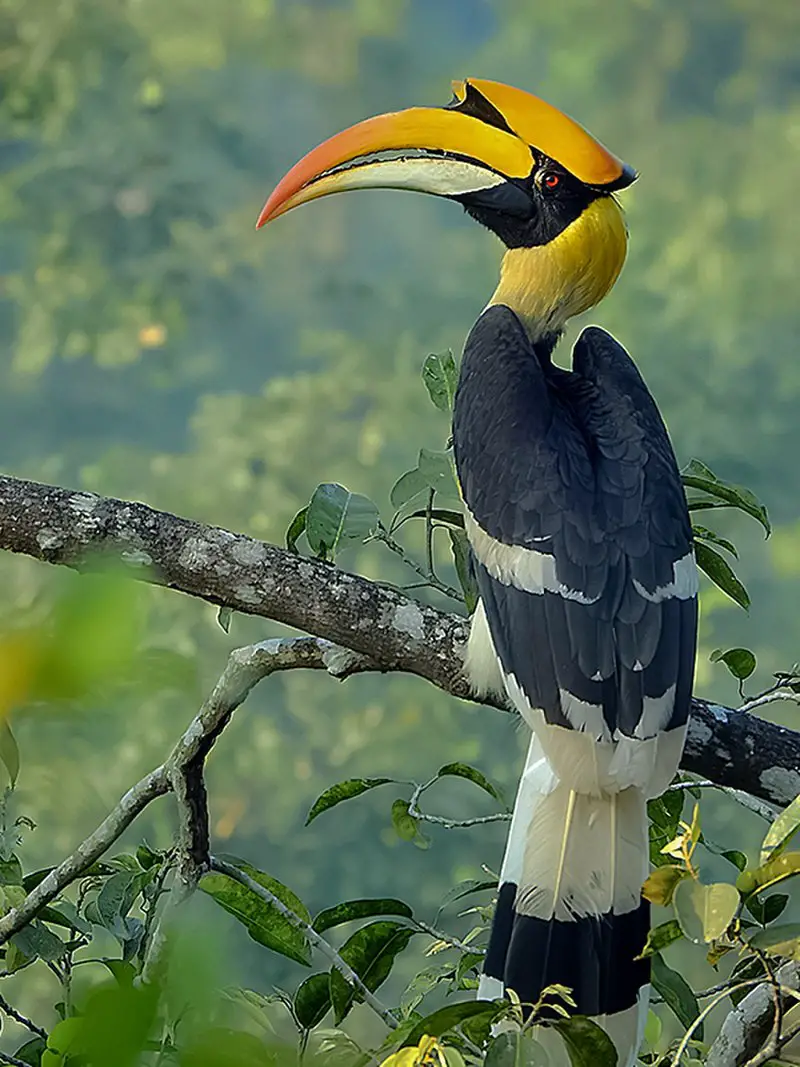
Hornbills are a tropical and subtropical bird species with characteristic long, curved bills. Their English and scientific names both refer to the shape of their bill which resembles that of a cow’s horn.
They have strong beaks for cracking open hard-shelled fruits as well as powerful wings for flying between trees or over great distances in search of food or mates.
Hornbills also feature beautiful plumage ranging from white to black feathers with yellow, brown, red and blue accents on the head, neck and back areas depending on the species.
In addition they often display brightly coloured casques – helmet like structures – atop their upper mandible adding further visual appeal to these majestic birds.
Scientific classification:
| Kingdom | Animalia |
| Phylum | Chordata |
| Class | Aves |
| Order | Bucerotiformes |
| Family | Bucerotidae Rafinesque, 1815 |
2. Bee-Eater
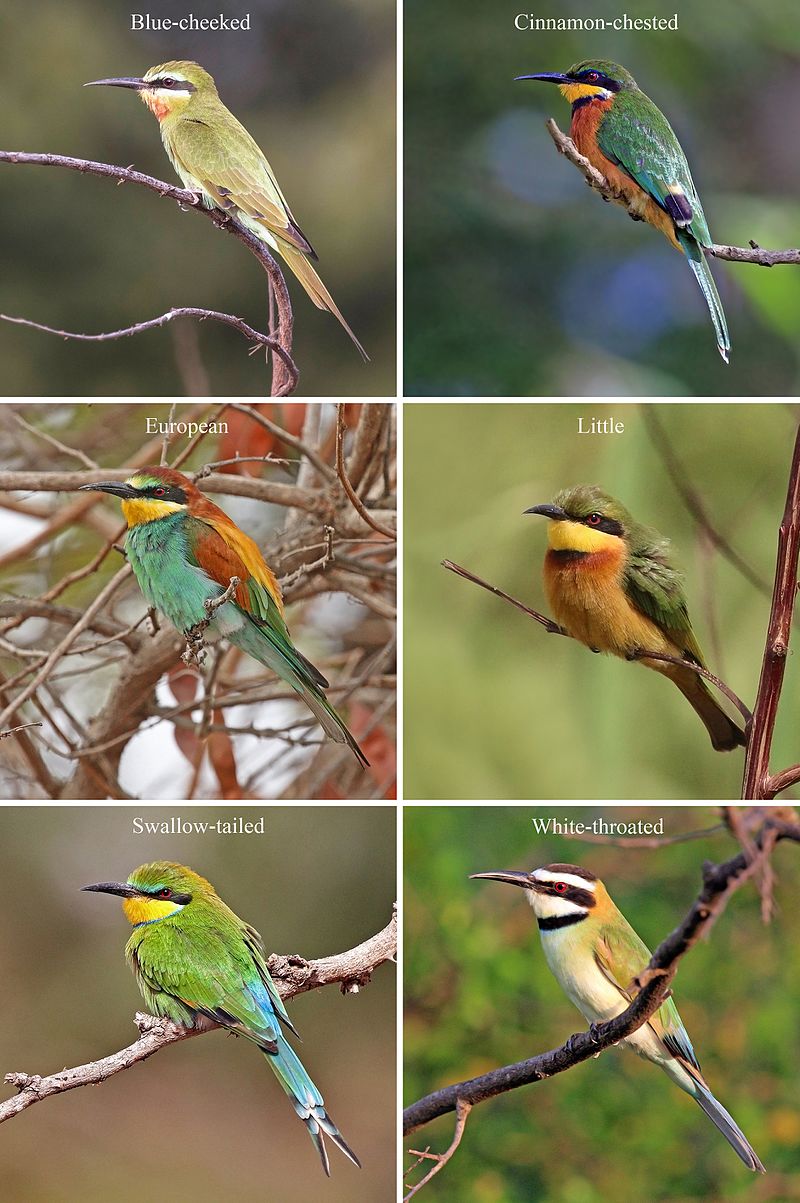
Bee-eaters are one of the most beautiful and vibrant birds in existence. They have a slender body, long wings, down turned bills and their signature elongated central tail feathers which make them instantly recognizable from afar.
Their plumage is incredibly colorful with many shades ranging from blues to greens to reds that glisten when they fly through the air.
These stunning creatures can be found all over Africa, Asia, Southern Europe, Australia and New Guinea where they feed mainly on bees but also other insects like flies or wasps as well as small mammals such as lizards or rodents.
Bee-eaters live in colonies near rivers or wetlands so that they may easily hunt for food while staying close together for safety purposes.
Additionally it allows them to better display their impressive courtship dances during mating season.
Scientific classification:
| Kingdom | Animalia |
| Phylum | Chordata |
| Class | Aves |
| Order | Coraciiformes |
| Family | Meropidae Rafinesque, 1815 |
3. Kingfisher
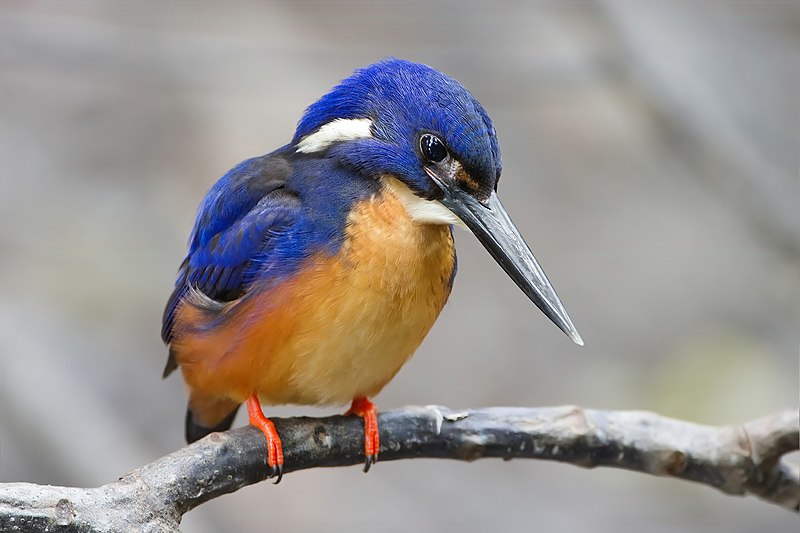
Kingfishers are a vibrant and unique family of birds, with most species found in tropical regions across Africa, Asia, Oceania and Europe.
Their bright colors make them easily identifiable among the foliage of deep forests near calm ponds or rivers.
They come in three subfamilies: tree kingfishers (Halcyoninae), water kingfishers (Cerylinae) and river kingfishers (Alcedinidae).
Kingfisher birds have short legs used for perching along branches overhanging streams or lakes; they also possess strong beaks perfect for catching fish.
These little hunters will remain motionless as if suspended from thin air until an unsuspecting prey comes within reach.
Then they swoop down quickly to grab their meal. With 116 different species making up this incredible family, there’s something special about every single one.
Scientific classification:
| Kingdom | Animalia |
| Phylum | Chordata |
| Class | Aves |
| Order | Coraciiformes |
| Suborder | Alcedines |
| Family | Alcedinidae Rafinesque, 1815 |
4. Blue-Throated Bee-Eater
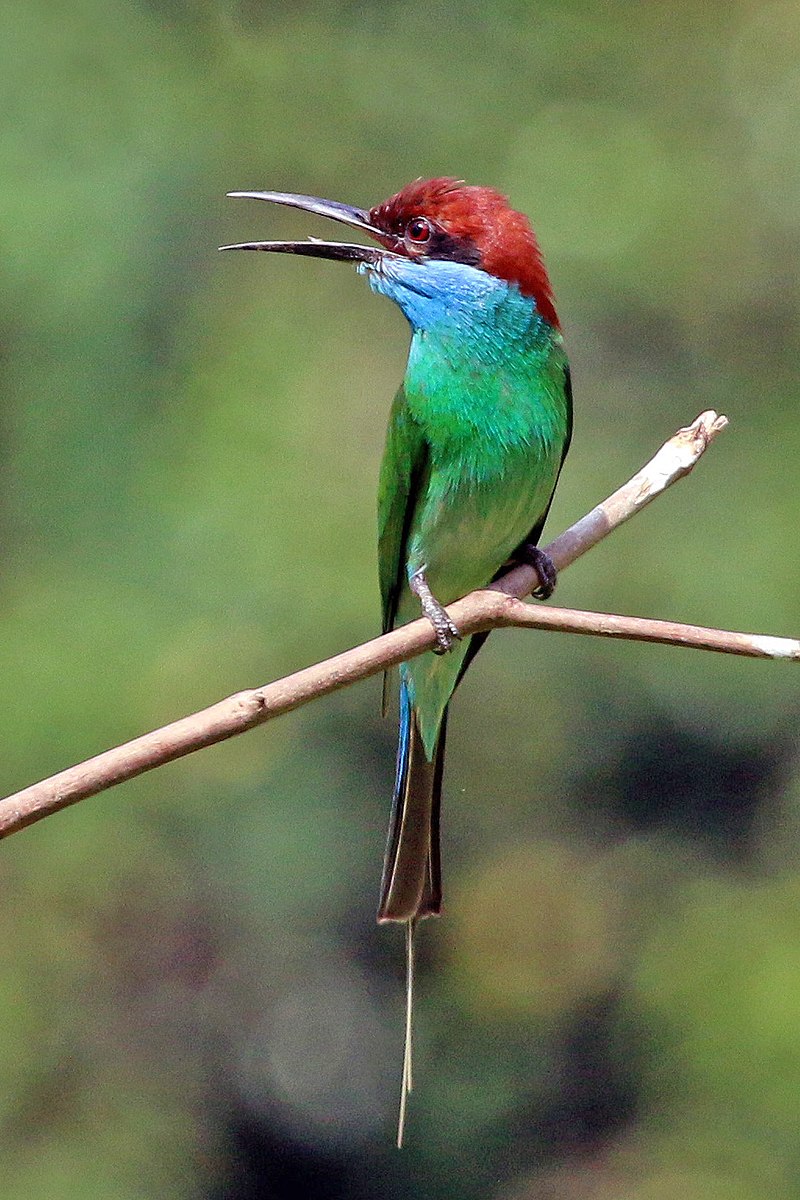
The beautiful Blue-throated bee-eater is a species of bird found in southeast Asia. These small birds have vibrant plumage, with a red nape, dark green wings and light green breast – but their signature feature is the bright blue throat.
Immature individuals are slightly different in appearance to adults; they are mostly brown with yellow markings on their face and chest.
Their diet consists mainly of bees, wasps and dragonflies which they catch while flying through the air or by snatching them from branches as they perch near flowers.
They usually live in mangrove forests where there are plenty of insects for them to feed on. The Blue-throated bee-eater is an interesting bird that can be easily recognised due its unique coloration making it stand out amongst other species.
Scientific classification:
| Kingdom | Animalia |
| Phylum | Chordata |
| Class | Aves |
| Order | Coraciiformes |
| Family | Meropidae |
| Genus | Merops |
| Species | M. viridis |
5. Ferruginous Partridge
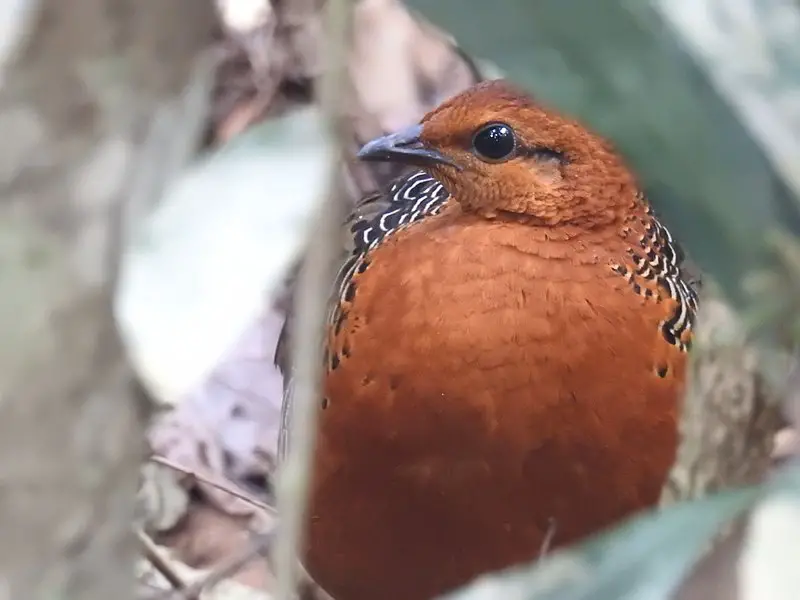
The Ferruginous Partridge is a species of bird belonging to the family Phasianidae and genus Caloperdix. It can be found in Indonesia, Malaysia, Myanmar and Thailand.
Coenraad Jacob Temminck first described it as Perdix oculea in 1815, where its specific name ‘oculea’ referred to Latin for eyes meaning that its feathers were covered with many small spots resembling eyes.
Its upperparts are rufous-brown or chestnut color while underparts have white bars on flanks which contrast against dark brown breast plumage making it look attractive.
These birds generally live alone or form pairs during breeding season but they become social when feeding together at nightfall near waterholes and farmlands like other partridges do.
The diet consists mainly of insects, grains and seeds though they also feed on snails occasionally along with fruits from trees such as jackfruit tree too.
Scientific classification:
| Kingdom | Animalia |
| Phylum | Chordata |
| Class | Aves |
| Order | Galliformes |
| Family | Phasianidae |
| Subfamily | Rollulinae |
| Genus | Caloperdix Blyth, 1861 |
| Species | C. oculeus |
Also Featured In: Birds that Found in Sumatra,
6. Chestnut-Capped Laughingthrush
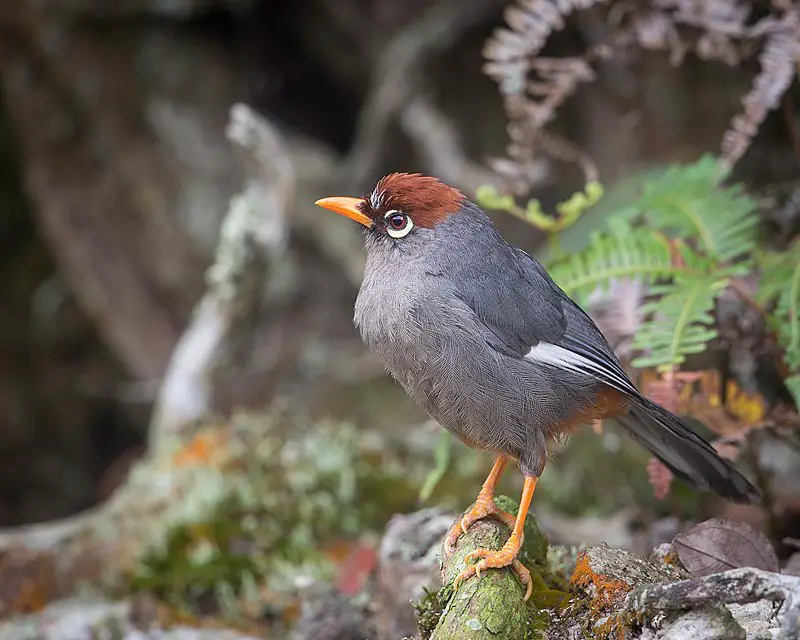
The Chestnut-capped Laughingthrush is a beautiful species of bird found in Sumatra and the Thai-Malay Peninsula.
They usually inhabit subtropical or tropical moist lowland forests and subtropical or tropical montane forests, where they can find their food sources such as insects, fruits, and seeds.
These birds are easily identified by its chestnut hood which extends to cover most of its head with white spectacles around the eyes. The body plumage is mostly greyish brown while underneath it has black barring on a pale yellow undertail coverts.
It was previously considered conspecific with Pterorhinus insularis but now recognized as distinct species due to differences in vocalizations and morphology.
Scientific classification:
| Kingdom | Animalia |
| Phylum | Chordata |
| Class | Aves |
| Order | Passeriformes |
| Family | Leiothrichidae |
| Genus | Pterorhinus |
| Species | P. mitratus |
7. Crab-Plover
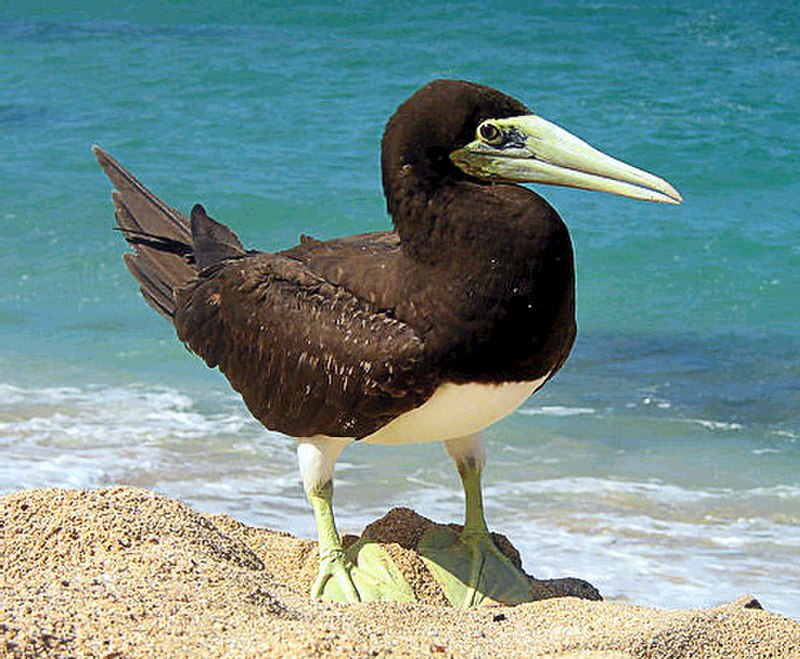
The crab-plover is an exceptional bird which belongs to its own family, Dromadidae. It appears to be closely related to the waders and other Charadriiformes such as auks, gulls and thick-knees.
This species of bird has a unique look; it is white with black markings on its head and wings. Its long bill helps them dig for food in sand or mudflats.
They can also fly up into the air when disturbed by predators or people too close for comfort.
The crab plover spends most of its life near beaches where they feed on crabs, fish eggs and small insects found there.
These birds are highly social during breeding season but solitary at other times throughout their annual cycle making them difficult creatures to spot out in the wild but well worth trying.
Scientific classification:
| Kingdom | Animalia |
| Phylum | Chordata |
| Class | Aves |
| Order | Charadriiformes |
| Suborder | Lari |
| Family | Dromadidae GR Gray, 1840 |
| Genus | Dromas Paykull, 1805 |
| Species | D. ardeola |
8. Laughingthrushes
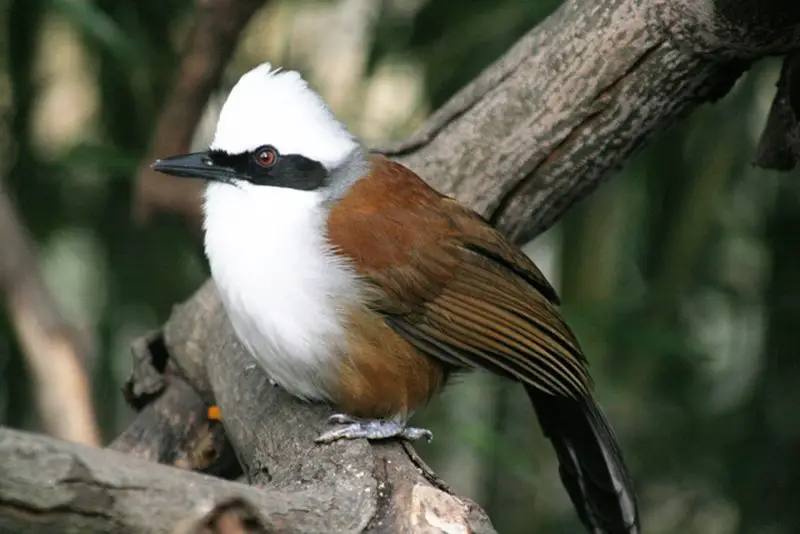
Laughingthrushes are a family of passerine birds found in tropical areas, primarily Southeast Asia and the Indian subcontinent.
They vary greatly in size and coloration but generally they have strong legs and many species are terrestrial or semi-terrestrial.
These birds typically inhabit forests where they feed on insects, fruits, seeds and occasionally small vertebrates.
The diet varies depending on the species as some prefer to forage among foliage while others look for food along the forest floor or take it from trees high up in their habitat.
In general these active creatures live in flocks that can range from just a few individuals to large groups with dozens of members making them quite vocal at times.
Scientific classification:
| Kingdom | Animalia |
| Phylum | Chordata |
| Class | Aves |
| Order | Passeriformes |
| Superfamily | Sylvioidea |
| Family | Leiothrichidae Swainson, 1832 |
9. Pittas
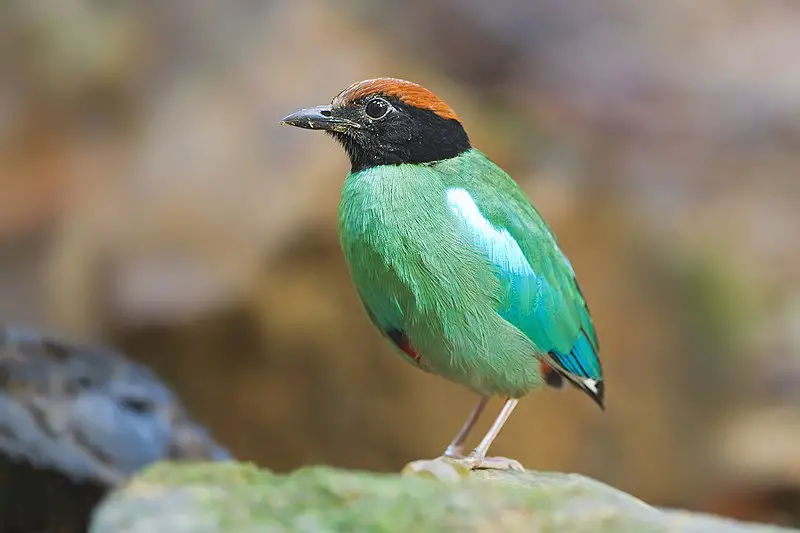
Pittas are a family of passerine birds known for their vibrant colors and unique appearance. They can be found in Asia, Australasia and Africa with around 40 to 42 species existing today.
These Old World suboscines have closest relatives among other bird genera such as Smithornis and Calyptomena.
Pittas inhabit tropical forests where they hop from branch to branch searching for insects or worms on the ground below them.
Their feathers are stunningly colored with combinations of blue, green, copper, purple or even yellow making them stand out amongst others in the forest canopy.
Scientific classification:
| Kingdom | Animalia |
| Phylum | Chordata |
| Class | Aves |
| Order | Passeriformes |
| Suborder | Tyranni |
| Infraorder | Eurylaimides |
| Superfamily | Pittoidea |
| Family | Pittidae Authority disputed.[a] |
10. Plovers

Plovers are a family of around 64-68 species of ground-dwelling birds, commonly found in open country such as fields, meadows and tundras.
They have short bills with webbed feet to help them forage through mud or shallow water.
Plover plumage is usually mottled brown though some species may have brighter colors on the head and wings.
These birds feed mainly on insects but can also eat small crustaceans and worms.
Plovers breed during springtime when they dig holes in sandy or pebbled beaches to lay their eggs which hatch after about 3 weeks incubation period.
They use distraction display behaviour by pretending an injury to the predators away from their nests if needed for protecting their young ones.
Scientific classification:
| Kingdom | Animalia |
| Phylum | Chordata |
| Class | Aves |
| Order | Charadriiformes |
| Family | Charadriidae Leach, 1820 |
11. Shorebirds
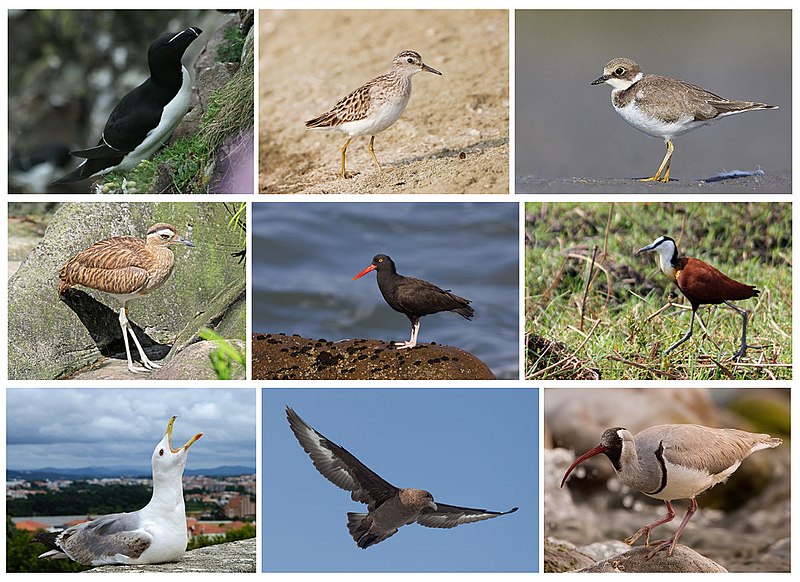
Shorebirds, a diverse group of birds in the Charadriiformes order, are found near water on every continent except Antarctica.
These small to medium-sized birds feed mainly on invertebrates and other small animals but can also be pelagic seabirds or inhabit deserts.
Shorebirds use their long bills to probe mudflats for food like worms and mollusks while some species plunge into the ocean’s depths in search of crustaceans such as crabs and shrimp.
They have strong legs equipped with webbed feet which allow them to move quickly when searching for prey across wetlands, sandbars, beaches and swamps.
Their feathers make them well adapted to life by land or sea due to its hydrophobic nature which helps reduce drag during swimming or flying through windy conditions making it easier for shorebirds survive tough environments around the world.
Scientific classification:
| Kingdom | Animalia |
| Phylum | Chordata |
| Class | Aves |
| Infraclass | Neognathae |
| Clade | Neoaves |
| Clade | Gruimorphae |
| Order | Charadriiformes Huxley, 1867 |
12. Malayan Peacock-Pheasant
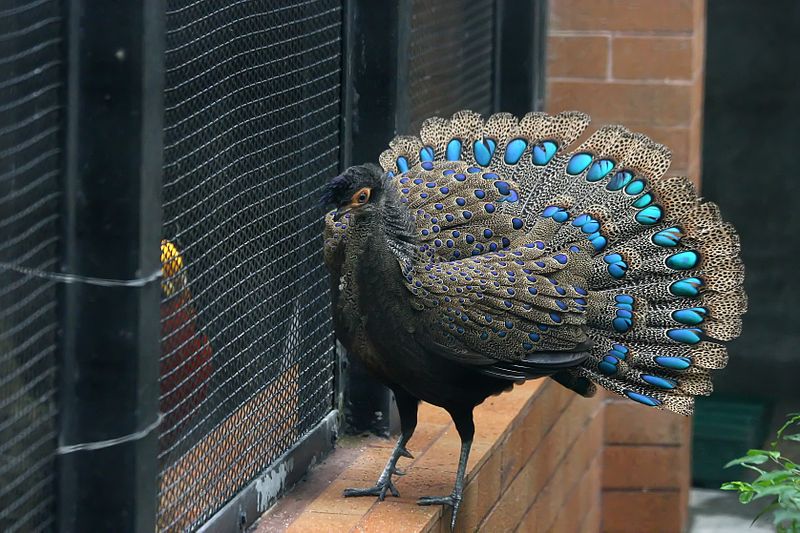
The Malayan peacock-pheasant is a medium sized bird from the Phasianidae family. It has a distinctive crest, and unlike other pheasants it has one of the shortest tails.
Its crested head plume typically contains black feathers with yellow edges, giving way to its vibrant blue neck plumage. The wings have reddish brown upperparts and pale grey underparts that give off an iridescent sheen when in sunlight.
This species can be found across Southeast Asia but prefers dense forests or scrubland habitats near water sources like streams or rivers for their food supply of insects, fruits, seeds and small amphibians they hunt on the ground.
They are shy by nature so if disturbed they will quickly fly away making them difficult to observe closely in the wild despite being relatively common throughout its range countries such as Malaysia and Thailand .
Scientific classification:
| Kingdom | Animalia |
| Phylum | Chordata |
| Class | Aves |
| Order | Galliformes |
| Family | Phasianidae |
| Genus | Polyplectron |
| Species | P. malacense |
13. Mountain Peacock-Pheasant
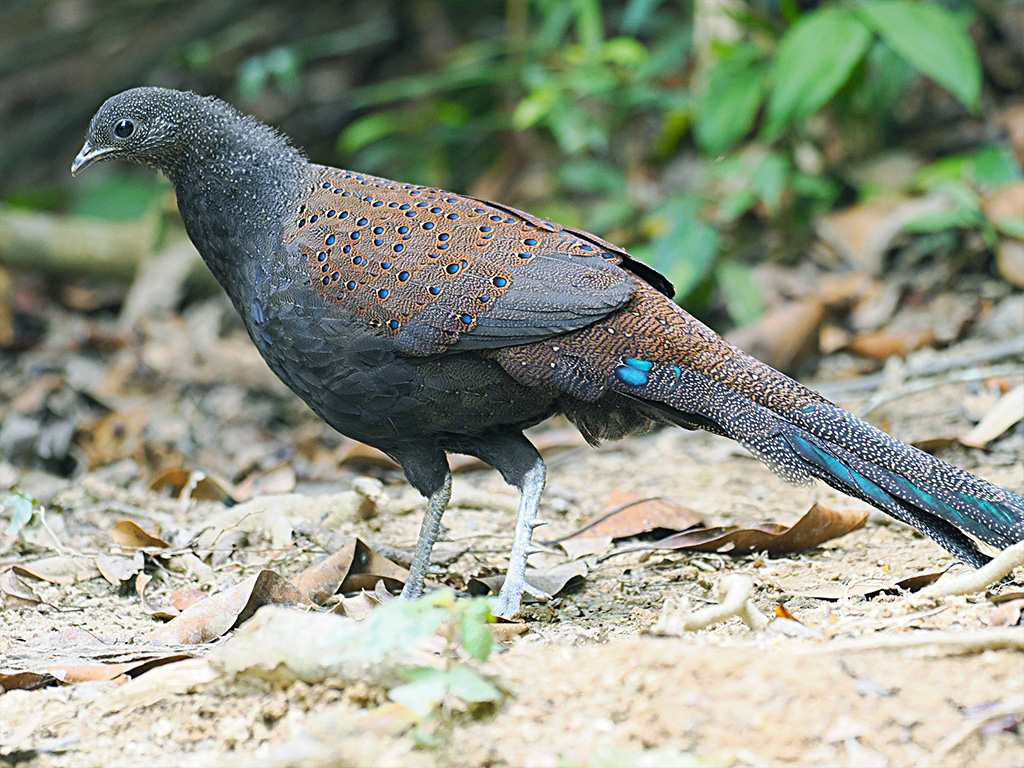
The Mountain Peacock-Pheasant is a stunningly beautiful bird with its blackish brown body and small ocelli. It can reach up to 65 cm in length, making it medium sized compared to other pheasants.
Males have metallic blue ocelli on their upperparts while the female has black ones instead. The males also possess two spurs on their legs as well as a long tail of twenty feathers adorned by green ocelli.
Both sexes are otherwise similar looking apart from these minor differences in coloration and extra features for the male birds. These birds are not commonly seen but when they do appear, gazing upon them is an incredible sight that should be treasured.
Scientific classification:
| Kingdom | Animalia |
| Phylum | Chordata |
| Class | Aves |
| Order | Galliformes |
| Family | Phasianidae |
| Genus | Polyplectron |
| Species | P. inopinatum |
14. Rhinoceros Hornbill
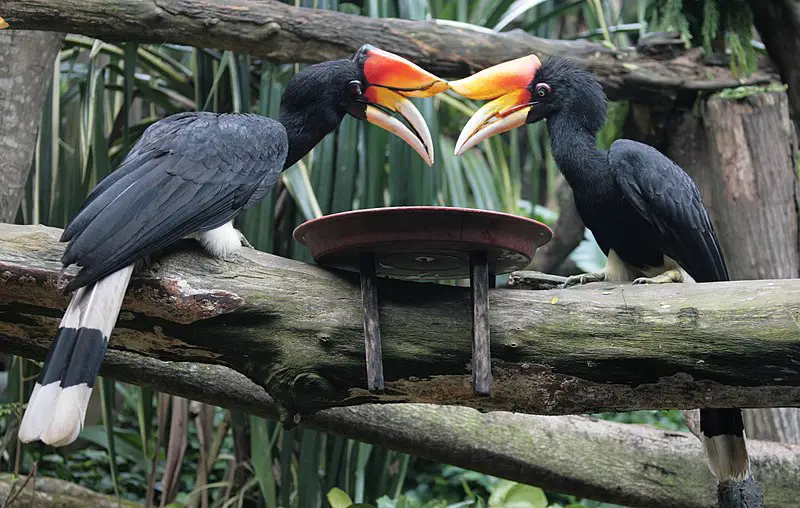
The Rhinoceros Hornbill is an impressive bird, found in various parts of Southeast Asia. It has a large beak which looks like the horn of a rhinoceros and it can reach up to 80 cm long.
They live in lowland, montane tropical and subtropical climates as well as mountain rain forests up to 1,400 metres. This species can live for around 35 years in captivity.
The Rhinoceros Hornbill is also the state bird of Malaysia where its population is most abundant.
Due to deforestation practices however, their habitats are increasingly under threat and thus these birds are becoming rarer by the day despite being protected by law across many countries they inhabit.
Scientific classification:
| Kingdom | Animalia |
| Phylum | Chordata |
| Class | Aves |
| Order | Bucerotiformes |
| Family | Bucerotidae |
| Genus | Buceros |
| Species | B. rhinoceros |
Also Featured In: Asian Birds, Birds that Live in Borneo Island
15. Jacanas
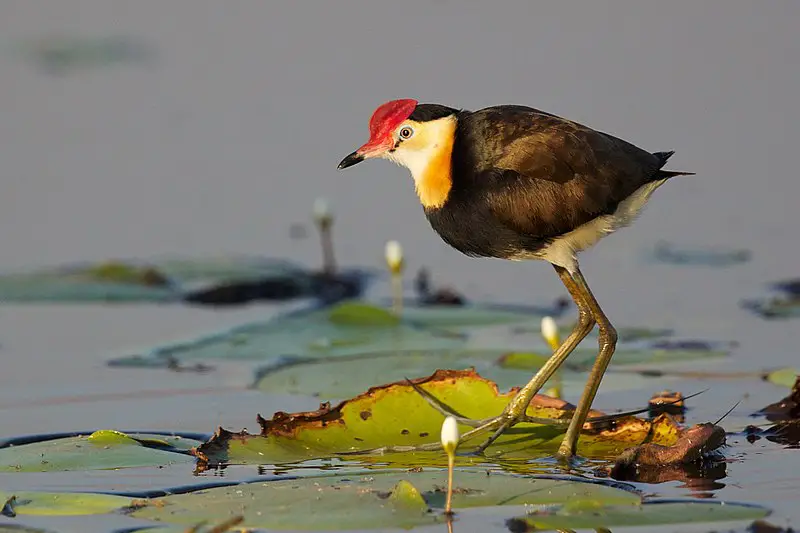
Jacanas are tropical waders belonging to the Jacanidae family. They have distinctive elongated toes and toenails which help them forage on floating or semi-emergent aquatic vegetation.
This adaptation gives them their nickname “Jesus birds” as they seem to be able to walk on water.
The female jacanas are also unique amongst bird species in that they take charge of nest building, incubation and caring for young while males perform courtship displays.
These unusual birds can be found throughout the world’s tropical regions where they inhabit wetlands such as swamps, marshes and shallow lakes with lily pads.
With a wide variety range due their special adaptations these beautiful creatures will surely continue living life at ease around our planet’s warmest waters.
Scientific classification:
| Kingdom | Animalia |
| Phylum | Chordata |
| Class | Aves |
| Order | Charadriiformes |
| Suborder | Thinocori |
| Family | Jacanidae Stejneger, 1885 |
16. Buttonquail
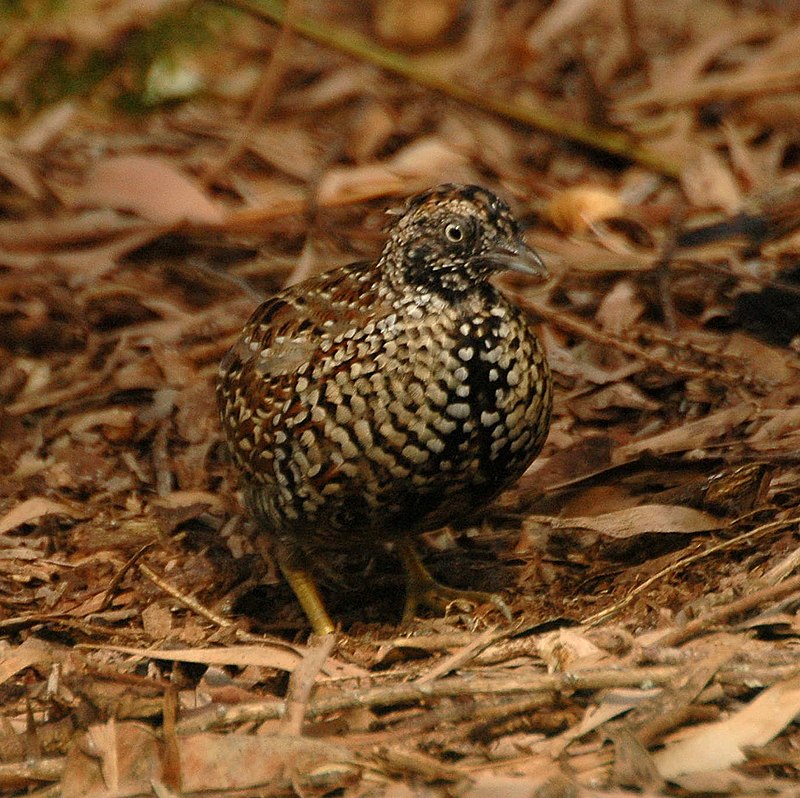
Buttonquails are small, terrestrial birds belonging to the family Turnicidae. They can be found in warm grasslands of Asia, Africa, Europe and Australia.
There are 18 species found across two genera; most being placed under the genus Turnix with a single species known as Ortyxelos.
These birds share a superficial resemblance to quail from Phasianidae but lack any close relation.
Buttonquails avoid flying and instead prefer running on their short legs for navigational purposes.
In terms of physicality they have drab colouring which comprises mostly browns or greys whilst sporting distinctive white patches around their eyes making them easy to identify within dense foliage areas where they usually hide away during times of danger or distress.
Scientific classification:
| Kingdom | Animalia |
| Phylum | Chordata |
| Class | Aves |
| Order | Charadriiformes |
| Family | Turnicidae GR Gray, 1840 |
17. Northern Storm Petrels
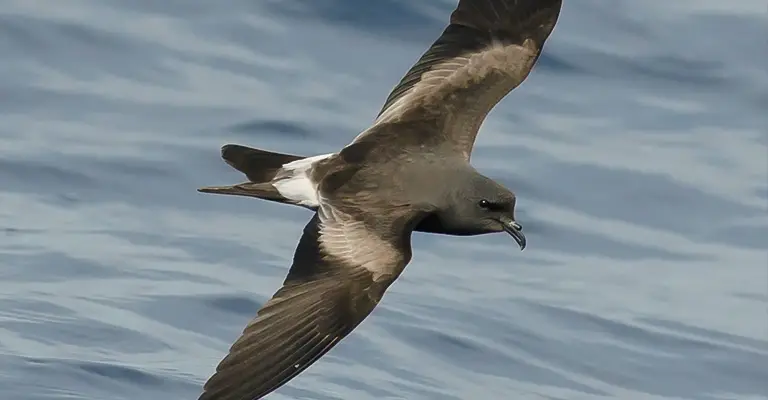
Northern storm petrels are one of the smallest seabirds, inhabiting oceans all over the world.
They have a unique ability to hover over water and pick planktonic crustaceans and small fish from the surface.
Northern storm petrels belong to the genus Hydrobates in family Hydrobatidae, part of Procellariiformes order.
This species was once lumped with austral storm petrel but recent studies show that they weren’t related closely which led them being split into two distinct species now.
These birds can be identified by their dark grey upperparts and wings along with white underparts when seen from afar while feeding on ocean’s surface.
Scientific classification:
| Kingdom | Animalia |
| Phylum | Chordata |
| Class | Aves |
| Order | Procellariiformes |
| Family | Hydrobatidae Mathews, 1912 |
| Genus | Hydrobates F. Boie, 1822 |
18. Procellariidae

Procellariidae is a diverse family of seabirds belonging to the bird order Procellariiformes.
These birds are commonly referred to as tubenoses and include fulmarine petrels, gadfly petrels, diving petrels, prions, and shearwaters.
They range in size from the small storm-petrel which measures around 18cm long to the giant albatross which can reach up to 3 meters in length.
Generally found near oceans or coasts where they feed on fish as well as squid and other marine life depending on species.
Many procellariids will also nest inland during breeding season before returning back out at sea for most of their lives.
Their wings have specially adapted feathers that give them incredible gliding abilities allowing them literally fly with minimal effort over vast distances across oceanic regions .
Scientific classification:
| Kingdom | Animalia |
| Phylum | Chordata |
| Class | Aves |
| Order | Procellariiformes |
| Family | Procellariidae Leach, 1820 |
19. Piciformes
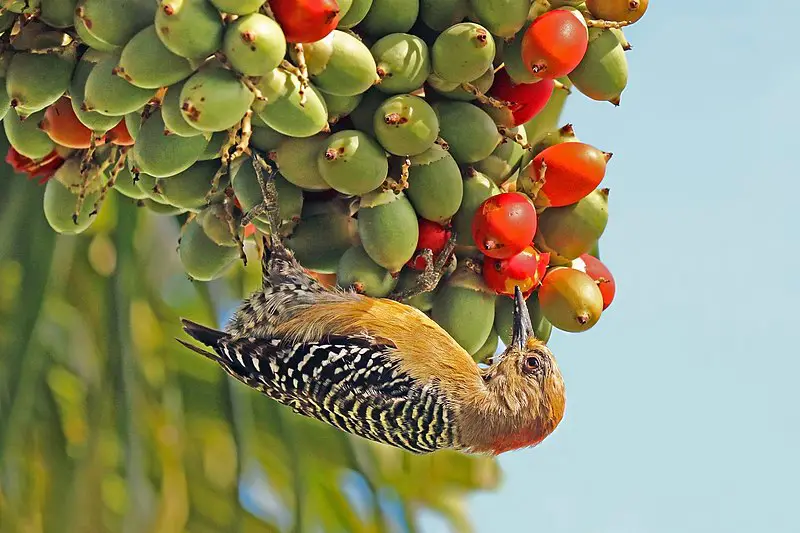
Piciformes are a diverse order of birds that includes the woodpeckers, barbets and toucans. They can be found in most regions around the world, with some species being migratory.
Generally they feed on insects, but fruit forms a large part of their diet for certain families such as barbets and toucans.
The Piciformes consist of 71 living genera containing over 450 individual species; almost half belonging to one family – the Picidae (woodpeckers).
As arboreal birds, many have adapted well to urban environments too which has helped them survive despite deforestation and habitat loss elsewhere.
Scientific classification:
| Kingdom | Animalia |
| Phylum | Chordata |
| Class | Aves |
| Clade | Picodynastornithes |
| Order | Piciformes Meyer & Wolf, 1810 |
20. Frogmouth
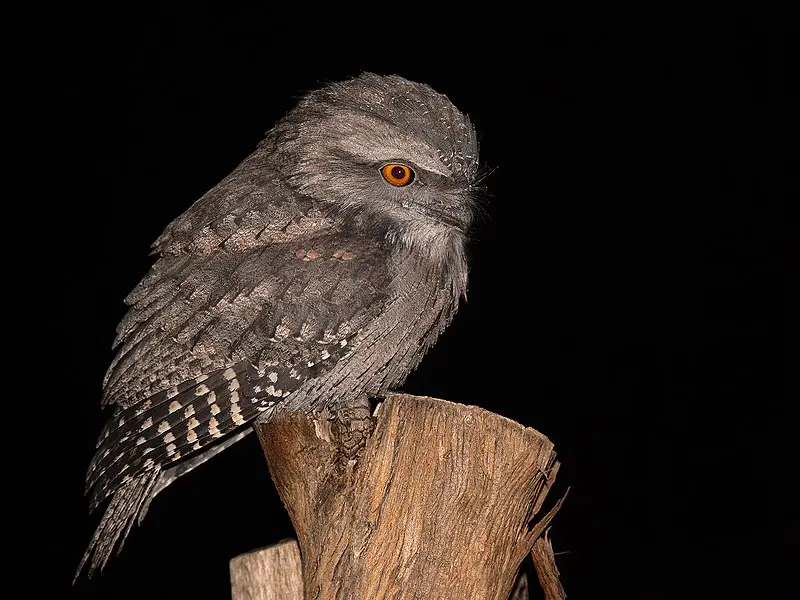
The Frogmouth is a nocturnal bird that belongs to the same family as owlet-nightjars, swifts and hummingbirds.
They have large flattened hooked bills with huge frog-like gape which helps them capture insects during night time.
Three species of Podargus are found in Australia and New Guinea only – they have massive eyes that allow for excellent night vision.
Their bodies are generally grey or brownish in colour with cryptic markings for camouflage when roosting during day light hours.
Generally known as quiet birds, their loud wailing call can be heard at dusk or dawn near river banks or wetlands where they live alone or form pairs throughout breeding season.
The diet of these fascinating creatures consists mainly of flying insects such as moths, beetles & cicadas etc., but on occasion will consume small vertebrates like lizards and frogs too.
Scientific classification:
| Kingdom | Animalia |
| Phylum | Chordata |
| Class | Aves |
| Clade | Strisores |
| Order | Podargiformes Matthews, 1918 |
| Family | Podargidae Gray, 1847 |
21. Glareolidae
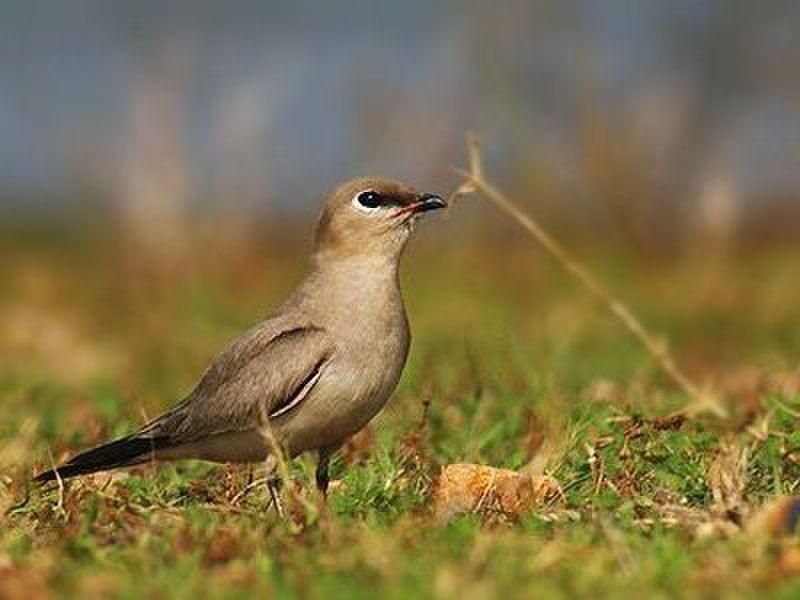
Glareolidae is a family of wading birds, consisting of four genera and 17 species. They are distinguished from other charadrii by their long bills which have a slight downward curve.
Glareolidae live around open grasslands and deserts, where they hunt for insects using the bill to probe into soil or vegetation.
Most species are found in Africa but two pratincoles inhabit parts of Europe and Asia as well.
Coursers tend to be larger than pratincoles with longer legs allowing them to run quickly across sandy dunes while feeding on small animals like lizards or spiders.
Pratincoles feed mainly on flying insects, snatching them out of midair with great agility during flight.
All glareolids share unique features such as large eyes that help it spot prey at night easily making this group one interesting bird family.
Scientific classification:
| Kingdom | Animalia |
| Phylum | Chordata |
| Class | Aves |
| Order | Charadriiformes |
| Suborder | Lari |
| Family | Glareolidae CL Brehm, 1831 |
22. Fire-Tufted Barbet
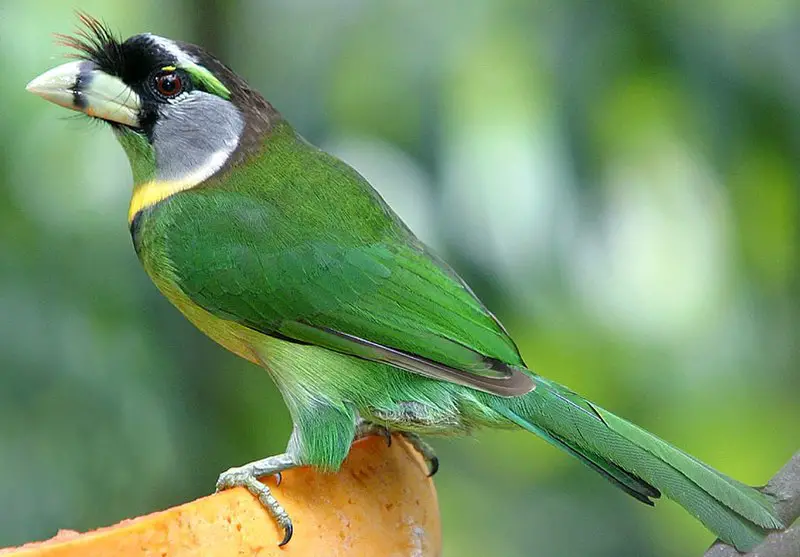
The Fire-tufted Barbet is a beautiful species of bird found in Peninsular Malaysia and Sumatra. It has bright red feathers on its head, giving it the name fire-tufted barbet.
The rest of its body is green with blue patches near the wings, making it quite distinctive among other birds. This species inhabits tropical moist lowland and montane forests where they feed mainly on fruits, insects and nectar from flowers.
As an endangered species according to IUCN Red List 2004, efforts are being made to protect this lovely bird’s habitat so that future generations can enjoy its beauty for years to come.
Scientific classification:
| Kingdom | Animalia |
| Phylum | Chordata |
| Class | Aves |
| Order | Piciformes |
| Family | Megalaimidae |
| Genus | Psilopogon |
| Species | P. pyrolophus |
23. Oriental Pied Hornbill
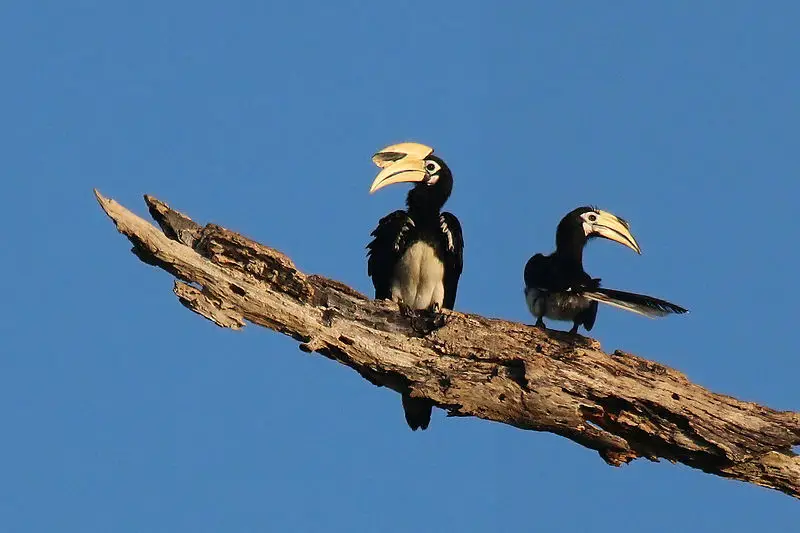
The Oriental Pied Hornbill is a species of Indo-Malayan bird belonging to the Bucerotidae family.
It’s one of the smallest and most common Asian hornbills, with its largest distribution found in the genus Anthracoceros.
This medium sized bird has black feathers all over its body, except for white wings and a white tail that make it stand out from other birds.
Its bill is yellow on top and red underneath, while their feet are greyish black.
These colorful characteristics help them blend into various habitats such as tropical forests or woodlands.
The diet consists mainly of fruits but they also feed on insects and small vertebrates like lizards or nesting birds’ eggs when available during certain seasons throughout their range habitat areas.
Monogamous pairs of birds construct their nests together using dead branches to create a secure chamber where the female can lay her eggs.
They carefully tend to the eggs until they hatch, and then rejoin their partner at nightfall.
These nests are often located near sources of food, in the beautiful and picturesque surroundings of trees and landscapes. These locations provide stunning views and make for attractive tourist destinations.
The scenery is breathtakingly beautiful, with spectacular vistas and awe-inspiring panoramas that are sure to captivate and charm visitors.
The overall atmosphere of these locations is heavenly and paradisiacal, making them a delight to behold.
The incredible beauty and grace of these places are simply remarkable, and visitors are sure to be impressed by their elegance and distinguished grandeur.
It is an experience that is sure to leave a lasting impression on anyone who is lucky enough to visit.
Scientific classification:
| Kingdom | Animalia |
| Phylum | Chordata |
| Class | Aves |
| Order | Bucerotiformes |
| Family | Bucerotidae |
| Genus | Anthracoceros |
| Species | A. albirostris |
24. Great Hornbill
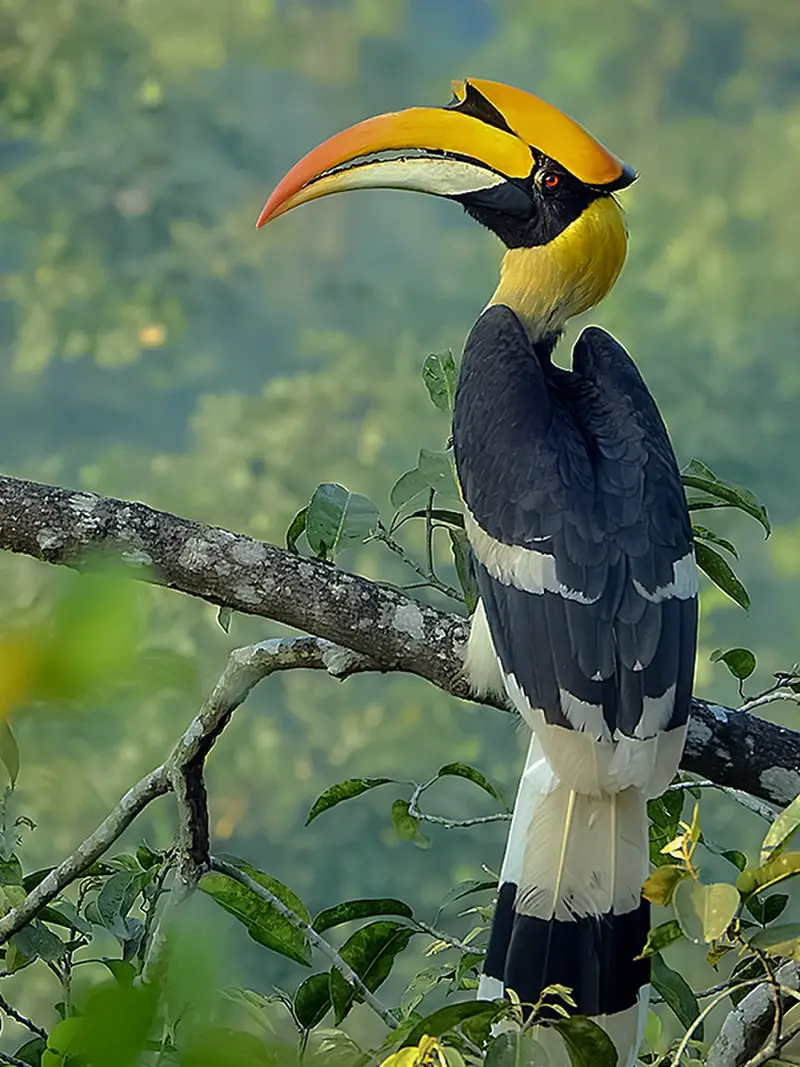
The Great hornbill is an impressive bird, belonging to the family of Hornbills. It can be found in India and Southeast Asia, mainly eating fruits but also preying on small mammals, reptiles and birds.
Its striking looks include a concave casque which sits atop its head as well as vibrant yellow-orange feathers covering much of its body.
Unfortunately it’s listed by IUCN Red List since 2018 due to habitat loss resulting from deforestation for agriculture and timber logging activities taking place across the world today.
Despite this sad news there are still conservation measures being taken such as education programs focusing on sustainable farming practices that will help protect this amazing species’ future.
Scientific classification:
| Kingdom | Animalia |
| Phylum | Chordata |
| Class | Aves |
| Order | Bucerotiformes |
| Family | Bucerotidae |
| Genus | Buceros |
| Species | B. bicornis |
25. Garnet Pitta
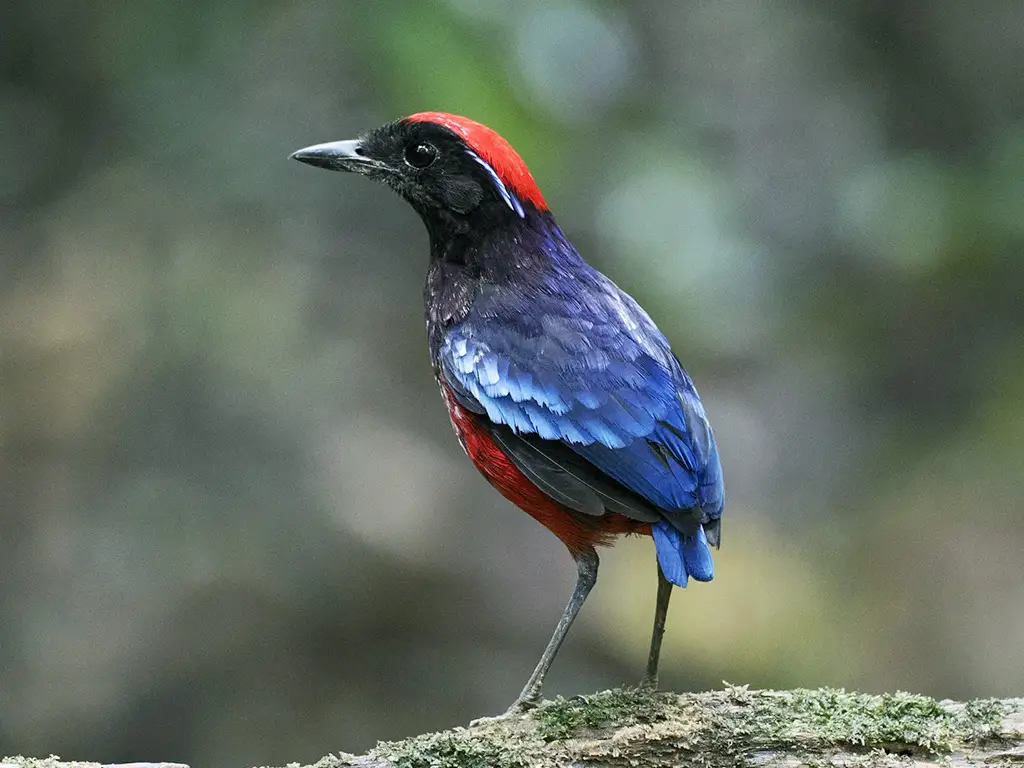
The Garnet Pitta is a species of bird belonging to the family Pittidae. It can be found in Brunei, Indonesia, Malaysia, Myanmar, Singapore and Thailand.
This small colourful bird inhabits moist lowland forests but sadly its natural habitat is being destroyed by deforestation so it has been classified as threatened on the IUCN Red List.
The form occurring in Sabah has even been split off from this species and named Black-Crowned Pitta (Erythropitta ussheri). Such changes in taxonomy are quite rare. With its bright red back feathers and blue crown this beautiful little creature makes an amazing addition to any forest setting.
Scientific classification:
| Kingdom | Animalia |
| Phylum | Chordata |
| Class | Aves |
| Order | Passeriformes |
| Family | Pittidae |
| Genus | Erythropitta |
| Species | E. granatina |
26. White-Bellied Sea Eagle
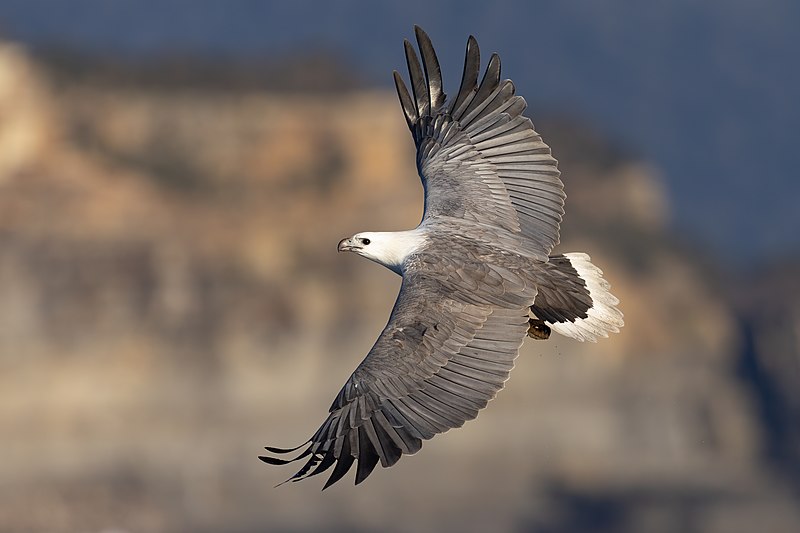
The White-bellied sea eagle is an impressive large bird of prey that belongs to the Accipitridae family.
It was first described by Johann Friedrich Gmelin in 1788 and it is closely related to Sanford’s sea eagle found in the Solomon Islands.
The adult white-bellied sea eagles have a stunning appearance with their white heads, dark brown bodies, and long wings which span up to 1.8 meters across.
They can be seen soaring above coastal areas searching for fish, reptiles or small birds as they hunt for food.
These majestic creatures are also known for being incredibly vocal when nesting – making loud cackling noises at dawn and dusk near riverside forests.
Scientific classification:
| Kingdom | Animalia |
| Phylum | Chordata |
| Class | Aves |
| Order | Accipitriformes |
| Family | Accipitridae |
| Genus | Haliaeetus |
| Species | H. leucogaster |
27. Buffy Fish Owl
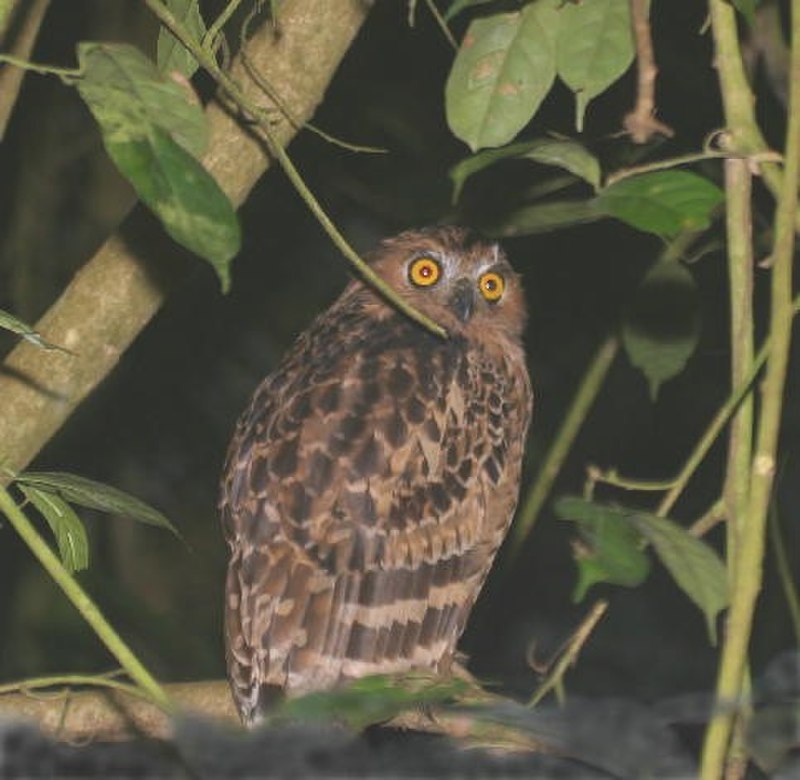
The Buffy Fish Owl is a large fish owl belonging to the family Strigidae. It is native to Southeast Asia and can be found in tropical forests and wetlands.
This species has an impressive wingspan of up to 1 meter, with its distinctive yellow eyes giving it away from other owls.
They feed mainly on small fishes, frogs, crustaceans as well as insects which they hunt near water sources at night time.
Although their population appears stable according to IUCN Red List 2004 listing them under Least Concern category, habitat destruction due logging activities remains one of the main causes for concern regarding this species’ long term survival in the wild.
Scientific classification:
| Kingdom | Animalia |
| Phylum | Chordata |
| Class | Aves |
| Order | Strigiformes |
| Family | Strigidae |
| Genus | Ketupa |
| Species | K. ketupu |
28. Rufous-Collared Kingfisher
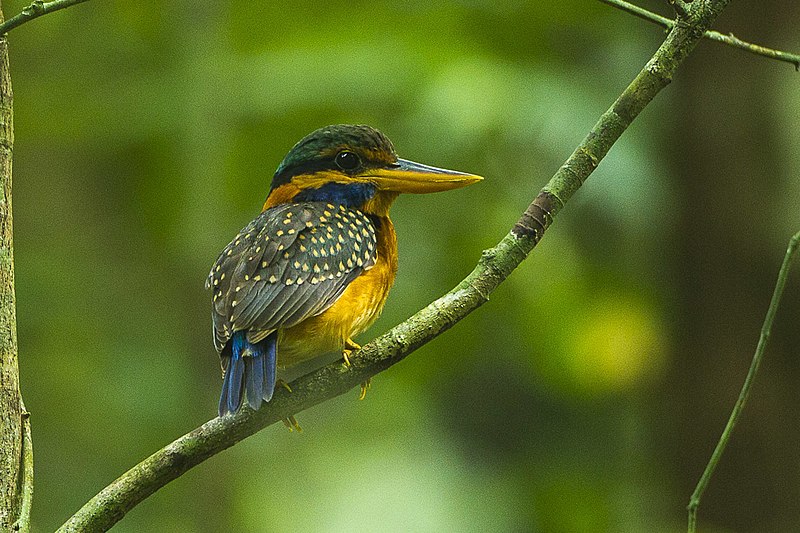
The Rufous-collared Kingfisher is a beautiful, medium-sized bird found in Brunei, Indonesia, Malaysia, Myanmar and Thailand. It has distinctive rufous collar feathers on its neck which contrast with the bright blue of its back.
The tail is long and pointed while the wings are short and rounded. These birds typically measure between 22–25.5 cm (8.7 -10 inches) in length and weigh about 60-90 grams (2 .1 ounces).
They inhabit subtropical or tropical moist lowland forests as well as montane forests but unfortunately their habitats have been threatened by deforestation leading to population decline for this species across much of their range .
Despite these threats the Rufous Collared Kingsher remains an iconic symbol of beauty throughout Southeast Asia.
Scientific classification:
| Kingdom | Animalia |
| Phylum | Chordata |
| Class | Aves |
| Order | Coraciiformes |
| Family | Alcedinidae |
| Subfamily | Halcyoninae |
| Genus | Actenoides |
| Species | A. concretus |
29. Blue-Eared Kingfisher
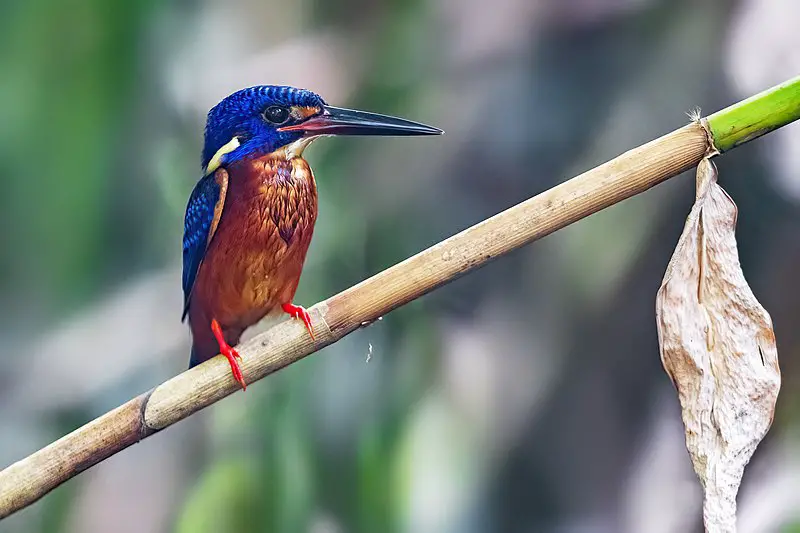
The Blue-eared Kingfisher is a beautiful species of bird found mainly in the dense forests across India and Southeast Asia.
Its distinguishing features include its darker crown, dark rufous underparts, and lack of the typical red ear stripe seen on other kingfishers such as Alcedo atthis which usually inhabit more open environments.
There are different subspecies identified by researchers due to slight variations in size or colouration present within this species.
The Blue-eared Kingfisher feeds mostly on small fish it catches while hunting along slow moving streams near shaded areas that provide plenty of cover from predators.
Not much else is known about these beautiful birds but they remain an important part of their local ecosystems.
Scientific classification:
| Kingdom | Animalia |
| Phylum | Chordata |
| Class | Aves |
| Order | Coraciiformes |
| Family | Alcedinidae |
| Subfamily | Alcedininae |
| Genus | Alcedo |
| Species | A. meninting |
30. Common Myna
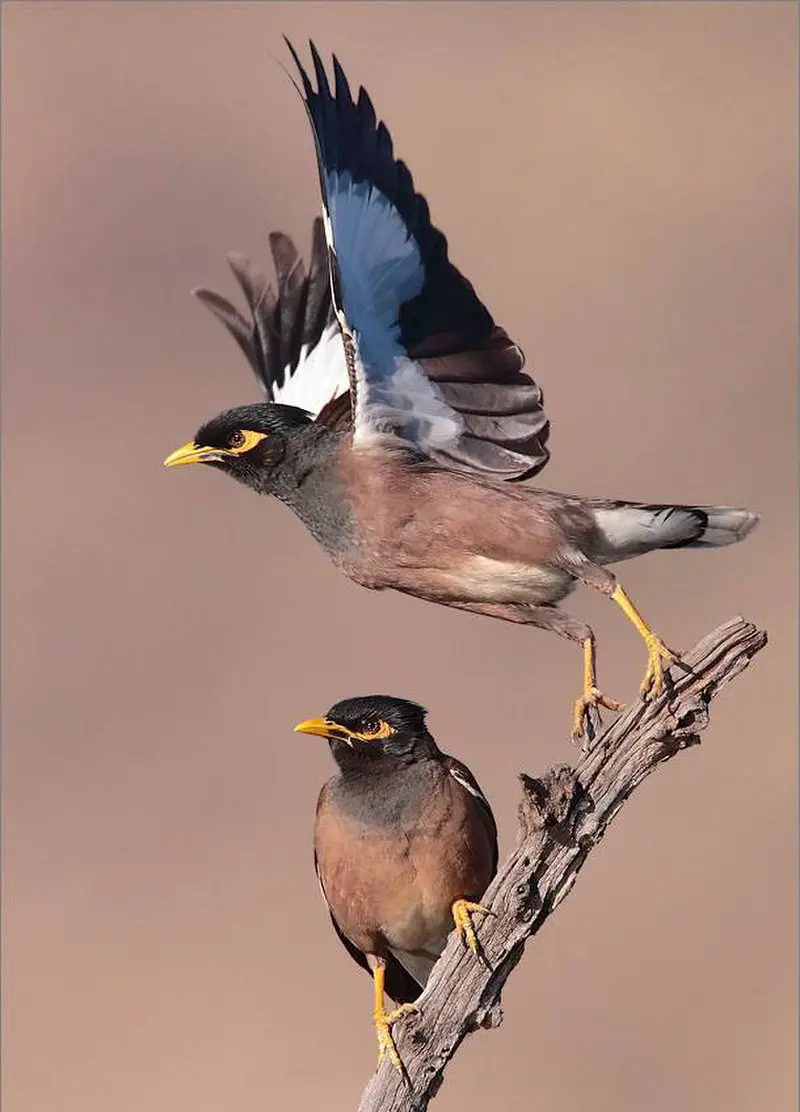
The Common myna is a bird native to Asia and belongs to the Sturnidae family. It has an omnivorous diet, strong territorial instinct and is well adapted to urban environments.
With its range increasing rapidly, it was declared one of the most invasive species by IUCN in 2000. Its distinctive features include black head with a yellow bill, brown body and white tips on wings & tail feathers.
The common myna communicates through loud clicking noises that can easily be heard from long distances in both rural as well as urban areas alike.
They are known for their intelligence; they mimic sounds such as human speech or other birds’ calls making them popular pets among households too.
Scientific classification:
| Kingdom | Animalia |
| Phylum | Chordata |
| Class | Aves |
| Order | Passeriformes |
| Family | Sturnidae |
| Genus | Acridotheres |
| Species | A. tristis |
31. Brahminy Kite
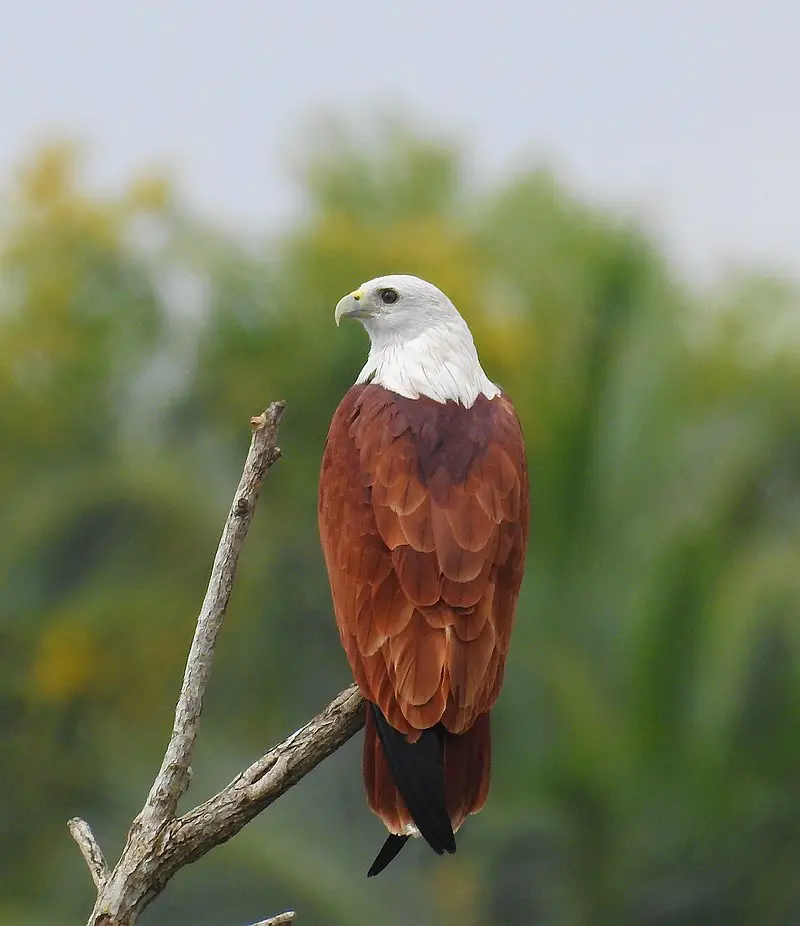
The Brahminy Kite is a majestic bird of prey native to the Indian subcontinent, Southeast Asia and Australia. It was formerly known as the red-backed sea eagle in Australia.
This medium-sized raptor has a distinctive white head with rufous brown feathers covering its body, making it easily recognisable from far away. The wingspan can reach up to 5 feet wide.
Brahminy kites are found mainly on coasts and inland wetlands where they feed mostly on dead fish or carrion left by other animals.
They also hunt for small mammals such as rodents or reptiles like lizards and snakes during dry spells when food sources become scarce.
These birds have adapted well over time and will even scavenge for food near picnic sites or urban areas if need be.
Overall these beautiful creatures are an important part of their local ecosystems which rely heavily upon them for keeping animal populations balanced through natural predation methods instead of manmade ones; this ensures that nature remains healthy so future generations may enjoy it too.
Scientific classification:
| Kingdom | Animalia |
| Phylum | Chordata |
| Class | Aves |
| Order | Accipitriformes |
| Family | Accipitridae |
| Genus | Haliastur |
| Species | H. indus |
32. Black-Naped Oriole
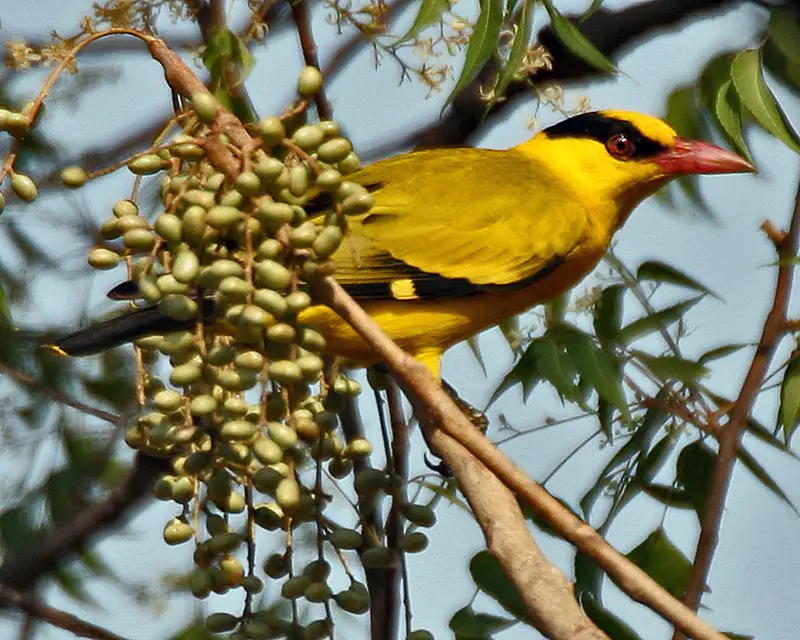
The Black-naped Oriole is a stunning bird native to Asia. It has bright yellow feathers with black markings on its head, wings and tail. Its beak and legs are also black in colour.
These birds can grow up to 25 cm long and they have very distinctive eye stripes – the eye stripe of this species is broader than that of the Indian Golden Oriole.
They mostly inhabit forests as well as open areas such as grasslands, orchards and gardens where there are plenty of trees for them to feed on insects or fruits like figs, dates and berries.
The Black-naped Orioles live in small flocks during their nonbreeding season but become solitary when breeding begins which usually occurs between March and May each year depending upon location.
Scientific classification:
| Kingdom | Animalia |
| Phylum | Chordata |
| Class | Aves |
| Order | Passeriformes |
| Family | Oriolidae |
| Genus | Oriolus |
| Species | O. chinensis |
33. White-Throated Kingfisher
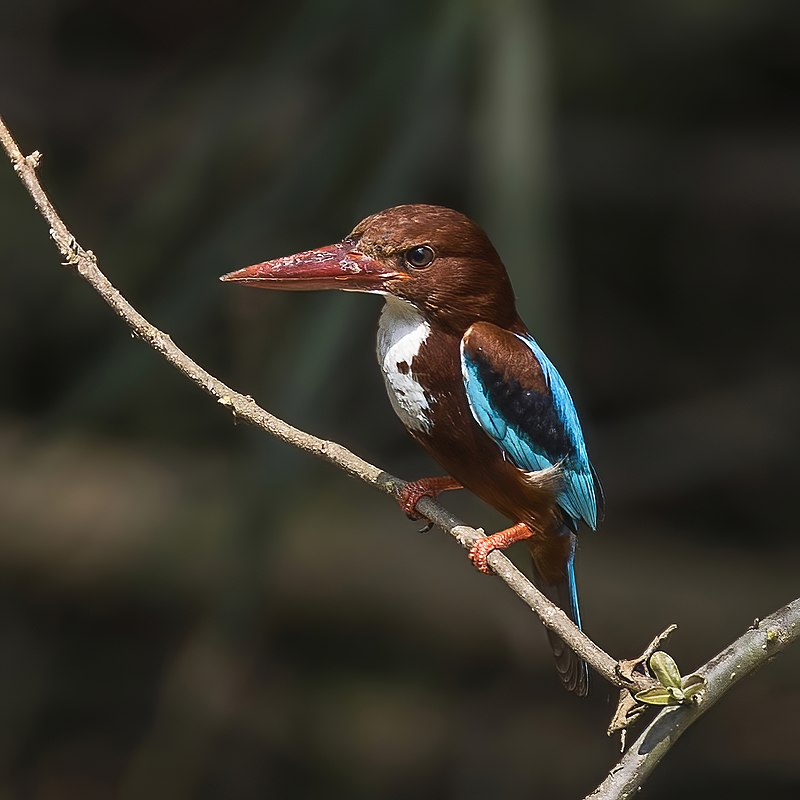
The White-throated Kingfisher is a beautiful bird with bright colors and distinct features. Its back, wings and tail are a deep blue while the head, breast, throat and belly are white.
It has two black stripes across its eyes which contrast nicely against its orange beak and feet.
These birds can often be found perching on tree branches or hovering over creeks in search of food like fish or small insects such as grasshoppers or crickets.
They use their sharp bill to pluck prey from water surfaces then swallow them whole after making adjustments for size by beating it against rocks if necessary.
The White-throated Kingfisher breeds during monsoon season when rainfall increases levels in rivers leading to an abundance of aquatic life that these birds love so much.
Scientific classification:
| Kingdom | Animalia |
| Phylum | Chordata |
| Class | Aves |
| Order | Coraciiformes |
| Family | Alcedinidae |
| Subfamily | Halcyoninae |
| Genus | Halcyon |
| Species | H. smyrnensis |
34. Spotted Dove
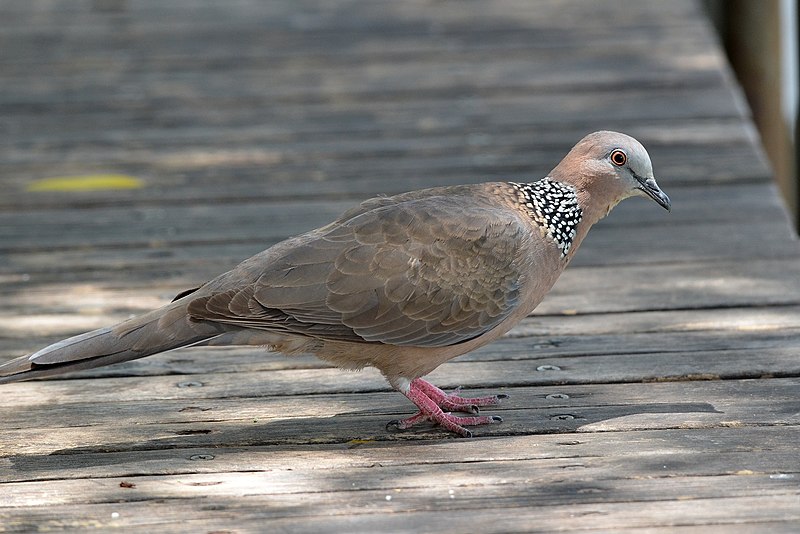
The Spotted Dove is a common species of pigeon found in the Indian subcontinent and Southeast Asia. It has an elegant, slender body with small head, long tail feathers and spotted wings.
Its coloring ranges from grey to brownish-grey on its upperparts with white underparts that are speckled black or dark grey. The male generally has more prominent spots than the female.
They feed mainly on seeds but will also consume insects when available during breeding season as well as berries, grains and fruits throughout their range.
These birds typically live in pairs or small groups near water sources such as ponds, rivers or streams where they can find food easily while staying safe from predators like cats and hawks.
Scientific classification:
| Kingdom | Animalia |
| Phylum | Chordata |
| Class | Aves |
| Order | Columbiformes |
| Family | Columbidae |
| Genus | Spilopelia |
| Species | S. chinensis |
35. Eurylaimidae
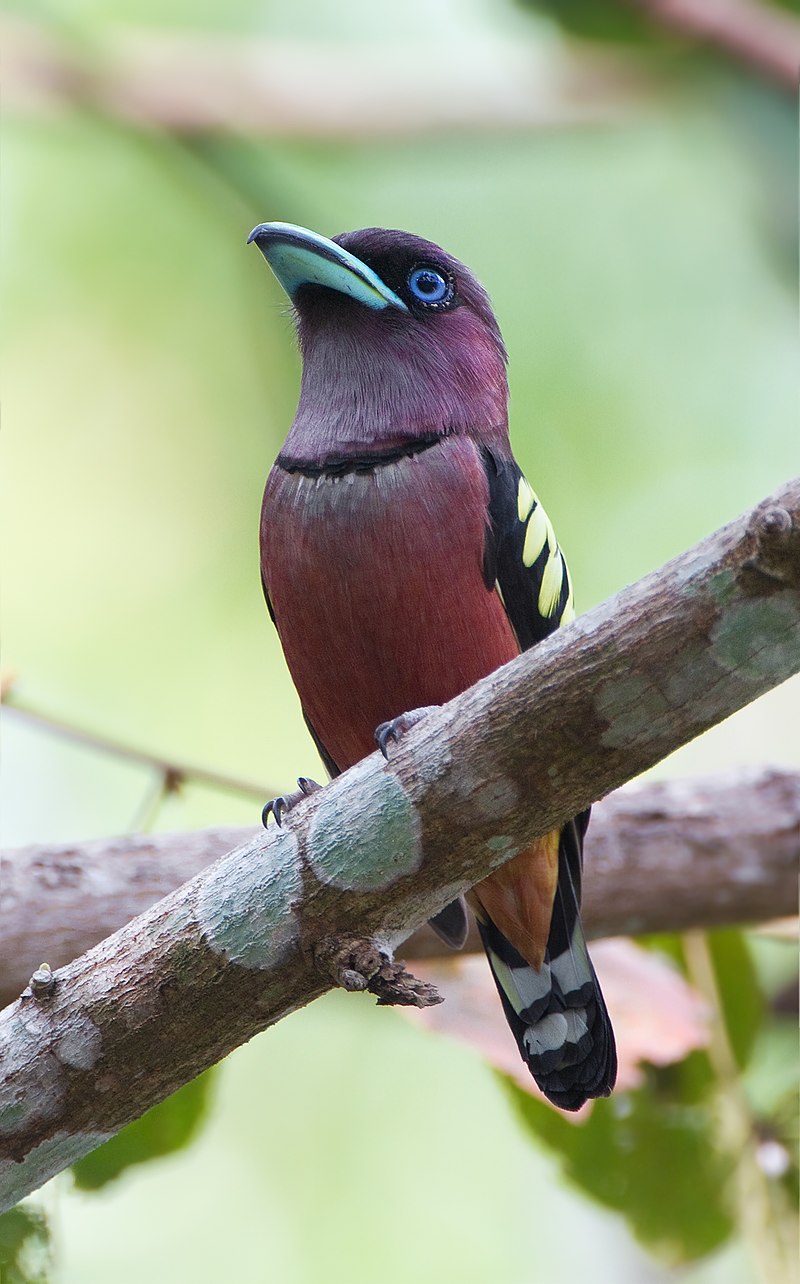
The Eurylaimidae family of birds is a diverse group, found in the eastern Himalayas all the way to Indonesia and Philippines.
They are suboscine passerines that have been known for their bright colours and broad heads.
Majority of these species live in tropical forests or wetlands, where they feed on small invertebrates like insects and worms.
Some specific species such as drongos use mimicry calls to communicate with other animals while most eurylaimids sing beautiful songs during mating season or territorial disputes.
In addition, many members of this family can actively hunt prey using aerial manoeuvres which make them interesting study subjects for ornithologists around the world.
Scientific classification:
| Kingdom | Animalia |
| Phylum | Chordata |
| Class | Aves |
| Order | Passeriformes |
| Superfamily | Eurylaimoidea |
| Family | Eurylaimidae Lesson, 1831 |
36. House Crow
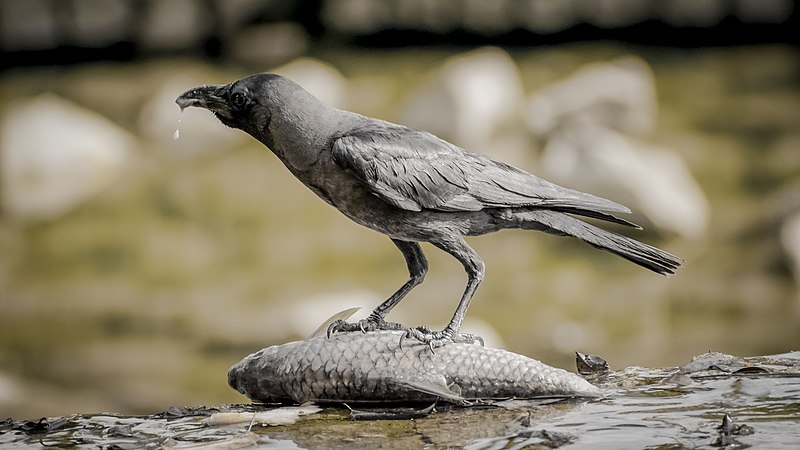
The House Crow (Corvus splendens) is a member of the crow family which originated in Asia and has spread to many other parts of the world.
It is medium-sized, measuring 40 cm long, with a slimmer body than most crows.
The forehead, crown, throat and upper breast are all black while its back and wings are greyish brown.
Its tail feathers have white tips that create an attractive pattern when seen from below during flight. The beak is strong like that of other corvid birds but slightly curved downwards towards its tip.
They can often be found around towns scavenging for food or gathering at roosts near buildings where they congregate to sleep overnight before going out again in search of sustenance.
Scientific classification:
| Kingdom | Animalia |
| Phylum | Chordata |
| Class | Aves |
| Order | Passeriformes |
| Family | Corvidae |
| Genus | Corvus |
| Species | C. splendens |
Also Featured In: Delhi Birds You Need to See,
37. Pink-Necked Green Pigeon
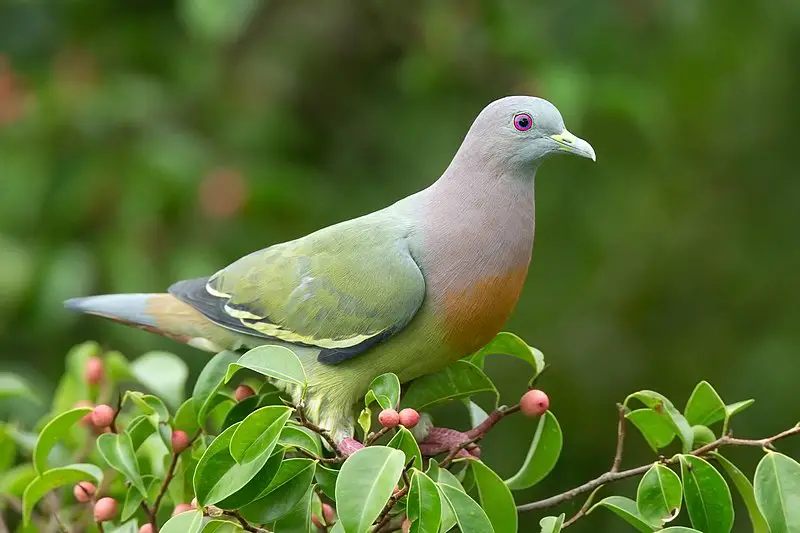
The Pink-necked green pigeon is a beautiful bird of the Columbidae family, native to Southeast Asia. Its body is mainly covered with emerald feathers and only the male has an eye-catching pink neck.
It can be found from Myanmar and Vietnam down to Indonesia and even in parts of Philippines, where it’s known as “punay”.
This medium sized species loves feeding on fruits such as figs or guavas but also enjoys snacking on insects from time to time.
In its natural habitat, this colorful avian often nests high up in trees for better protection against predators.
All in all, the unique beauty of Pink-necked Green Pigeon makes it one truly remarkable bird.
Scientific classification:
| Kingdom | Animalia |
| Phylum | Chordata |
| Class | Aves |
| Order | Columbiformes |
| Family | Columbidae |
| Genus | Treron |
| Species | T. vernans |
38. Crested Fireback
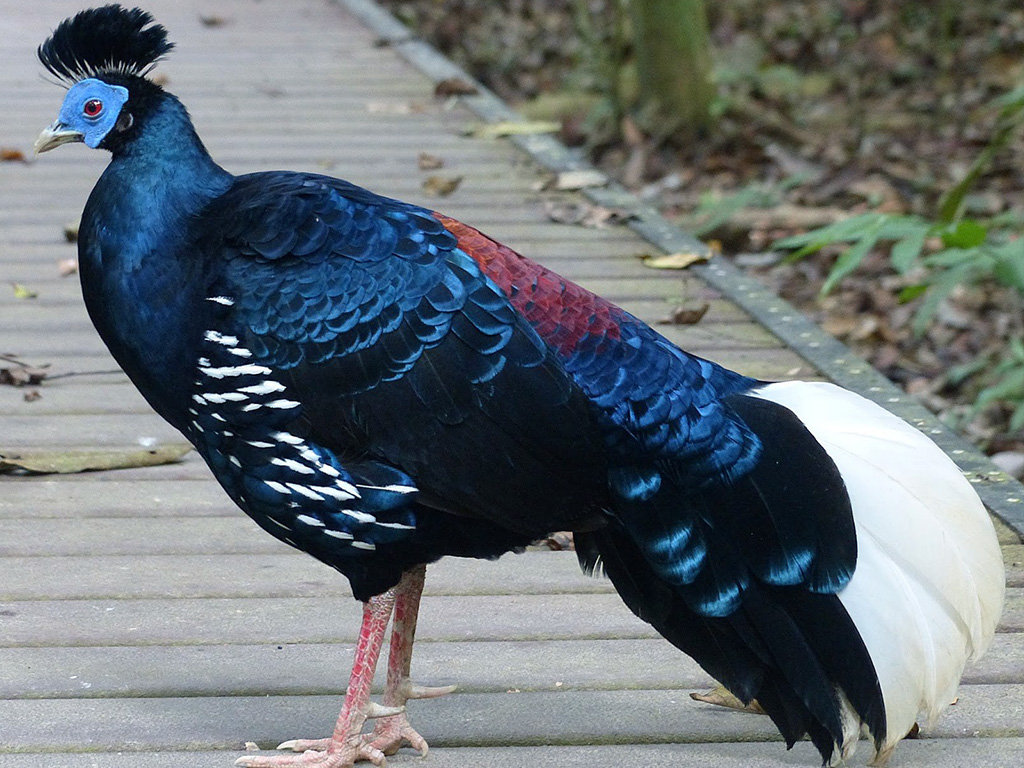
The Crested Fireback is a stunning bird that inhabits the lowland forests of the Thai-Malay Peninsula.
It has an impressive peacock-like dark crest, bluish black plumage and reddish brown rump with black outer tail feathers.
The female birds are easily distinguishable due to their shorter crest, blue facial skin and spotted black-andwhite underside.
Male firebacks have red irises while females may have either brown or hazel eyeshade depending on subspecies.
These medium sized pheasants can grow up to 70 cm in length and make loud calls during breeding season which usually lasts from April till June when they lay 4–8 eggs per clutch.
They are omnivorous creatures who feed mainly on insects, fruits, small vertebrates as well as seeds found atop trees where they roost at night for protection against predators like snakes or civets.
Scientific classification:
| Kingdom | Animalia |
| Phylum | Chordata |
| Class | Aves |
| Order | Galliformes |
| Family | Phasianidae |
| Genus | Lophura |
| Species | L. ignita |
39. Yellow-Vented Bulbul
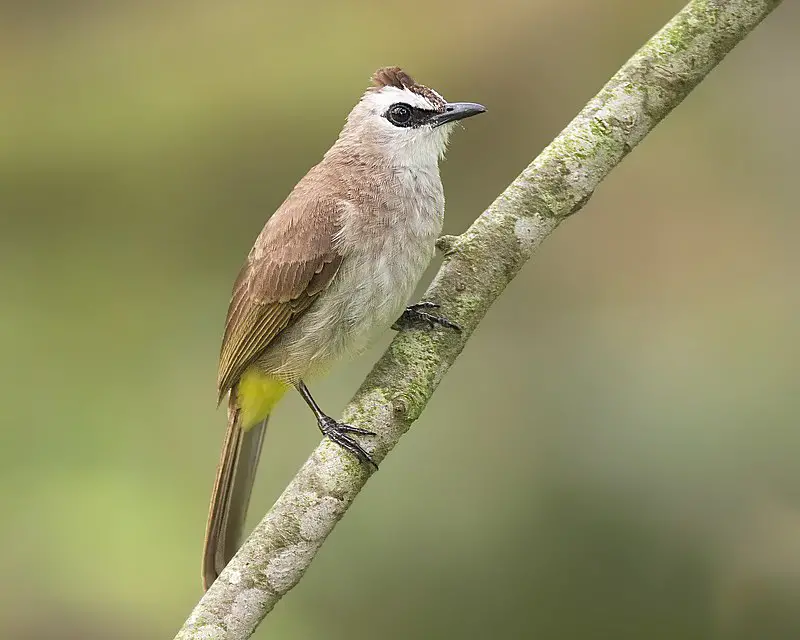
The Yellow-vented Bulbul is a stunning passerine bird from southeastern Asia, with its bright yellow and black plumage. It breeds in open habitats such as cultivated areas, but rarely enters deep forests.
They tend to be nomadic, wandering around and searching for food sources. During the breeding season they form pairs and build their nests at least two metres above ground level in trees or shrubs.
The female lays 2–4 eggs which are incubated by both parents over 13–14 days before hatching into chicks that fledge after 16–17 days of nestling stage..
These birds feed mainly on fruits or berries found in gardens or fields; insects like caterpillars may also make up part of their diet.
As beautiful as it looks, this species has a loud call which can become quite irritating if heard frequently.
Scientific classification:
| Kingdom | Animalia |
| Phylum | Chordata |
| Class | Aves |
| Order | Passeriformes |
| Family | Pycnonotidae |
| Genus | Pycnonotus |
| Species | P. goiavier |
40. Laced Woodpecker
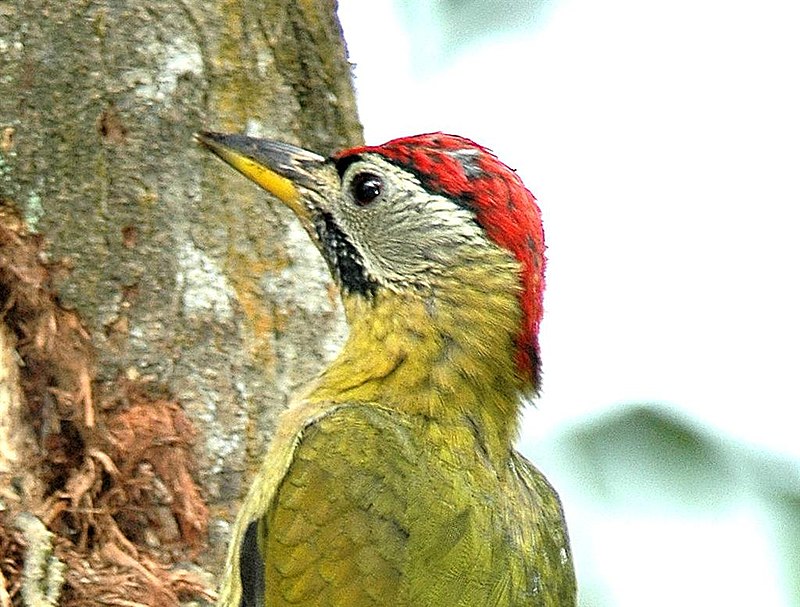
The Laced Woodpecker is a species of bird found in Southeast Asia. It inhabits subtropical and tropical dry forests, sub-tropical or tropical moist lowland forests, and mangrove forests.
This beautiful bird has white wings with black spotting on its back, while the head features a red crown which contrasts against its grey face.
Its underside is also spotted with black markings that cover the chest to the tail feathers.
The male birds have an additional yellow patch near their shoulder blades which makes them easily distinguishable from females.
Due to deforestation, this majestic species faces threats such as habitat loss leading it to be listed as “Near Threatened” by IUCN Red List of Threatened Species .
Scientific classification:
| Kingdom | Animalia |
| Phylum | Chordata |
| Class | Aves |
| Order | Piciformes |
| Family | Picidae |
| Genus | Picus |
| Species | P. vittatus |
41. Asian Koel
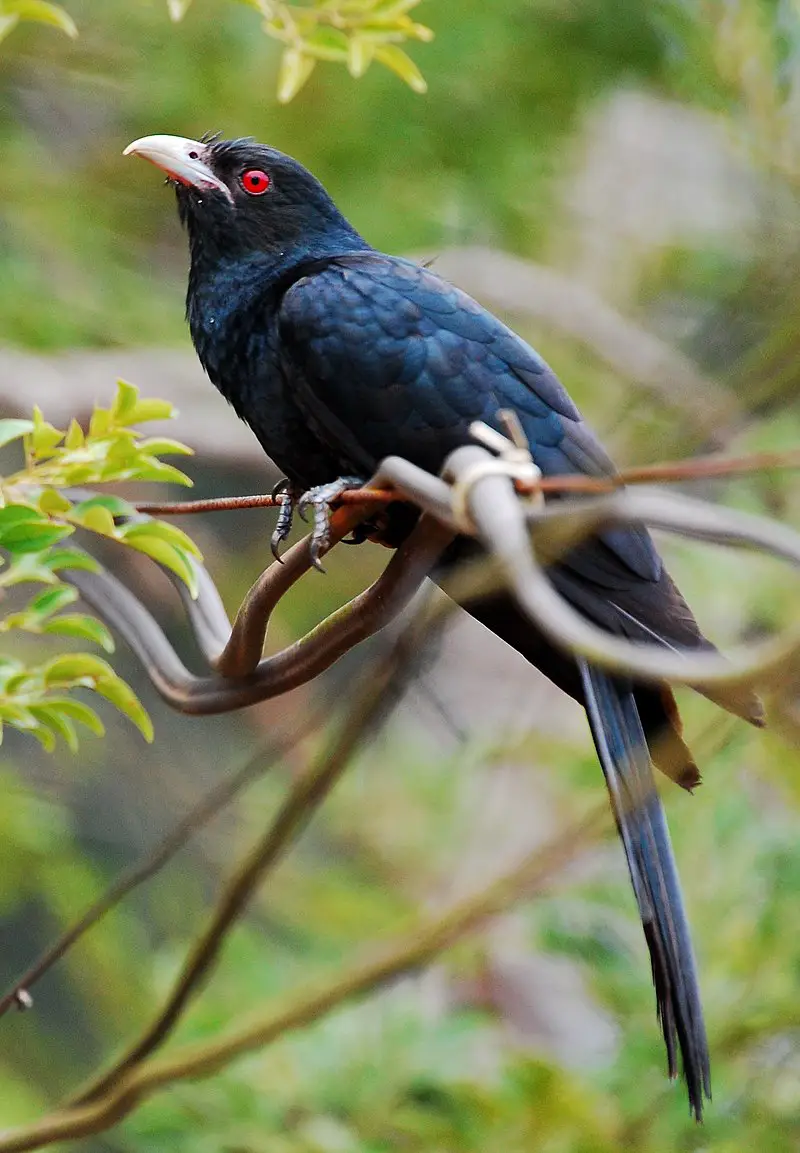
The Asian koel is a member of the Cuculiformes family, found in India, China and Southeast Asia. It shares its range with two closely related species – black-billed koels and Pacific koels.
This bird exhibits brood parasitism; it lays its eggs in nests of other birds, who then unknowingly become foster parents to their young.
Characterised by long tails and glossy feathers that vary from deep blue to greenish-black depending on region, these birds are known for their loud call which can be heard during both day or night time.
They feed mainly on fruits but also take insects when available.
All in all, the Asian Koel is an interesting species that has adapted itself well over many centuries within different ecosystems across Asia.
Scientific classification:
| Kingdom | Animalia |
| Phylum | Chordata |
| Class | Aves |
| Order | Cuculiformes |
| Family | Cuculidae |
| Genus | Eudynamys |
| Species | E. scolopaceus |
42. Malaysian Honeyguide
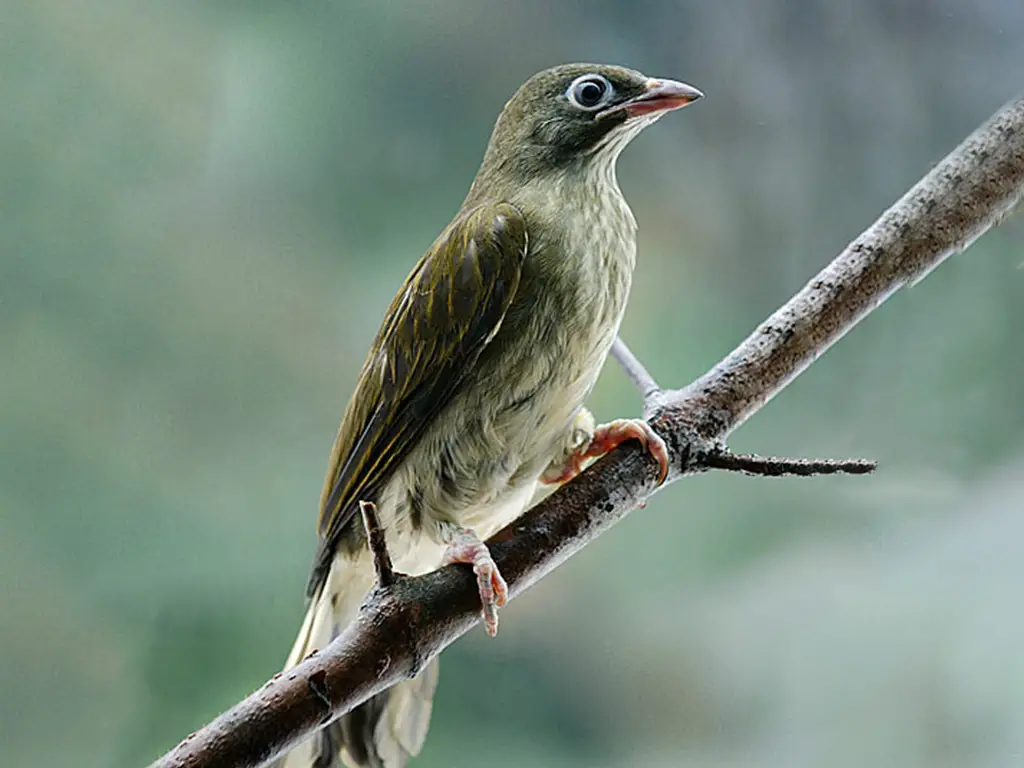
The Malaysian honeyguide is a species of paleotropical near passerine bird that belongs to the Indicatoridae family and can be found in Southeast Asia. They are known for their olive-brown coloration with greenish streaks, reddish iris, thick grey bill and greyish white underparts.
Males have an additional yellow patch on their shoulder. These birds measure up to 18 cm long and feed mainly on beeswax by breaking into bee nests as well as preying upon various insects like larvae or caterpillars.
Their calls sound similar to those of woodpeckers which helps them locate bee hives from far away distances in order to feast upon the contents inside it.
Scientific classification:
| Kingdom | Animalia |
| Phylum | Chordata |
| Class | Aves |
| Order | Piciformes |
| Family | Indicatoridae |
| Genus | Indicator |
| Species | I. archipelagicus |
43. White-Necked Babbler
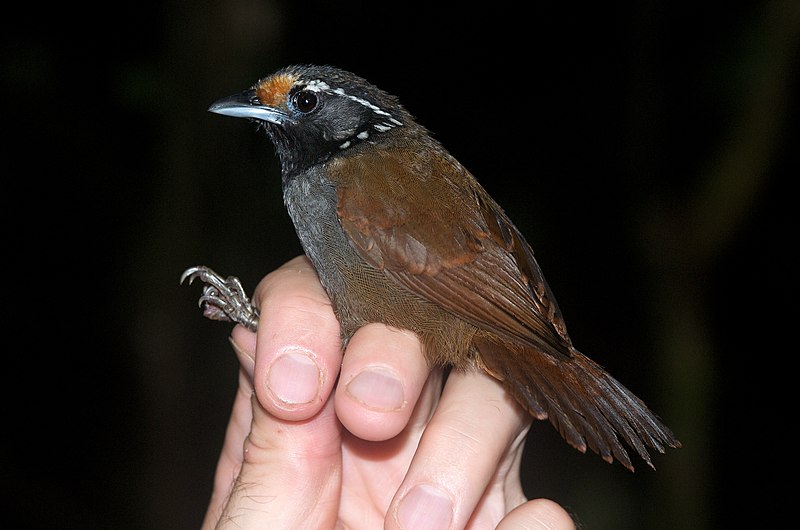
The white-necked babbler is a species of bird found in parts of Southeast Asia, including Brunei, Indonesia, Malaysia and Thailand. It has adapted to live in subtropical or tropical moist lowland forests but unfortunately this habitat is being lost due to human activity.
The white-necked babbler’s plumage is quite striking; its body feathers are black with bright yellow edging while the sides of its neck are pure white giving it an eye catching appearance.
This stunning small bird feeds mainly on insects such as ants which it picks off foliage and tree trunks using their long slender bill.
Sadly these birds face uncertain futures with increasing pressure on their habitats from humans putting them at great risk of extinction.
Scientific classification:
| Kingdom | Animalia |
| Phylum | Chordata |
| Class | Aves |
| Order | Passeriformes |
| Family | Timaliidae |
| Genus | Stachyris |
| Species | S. leucotis |
44. Black-Browed Barbet
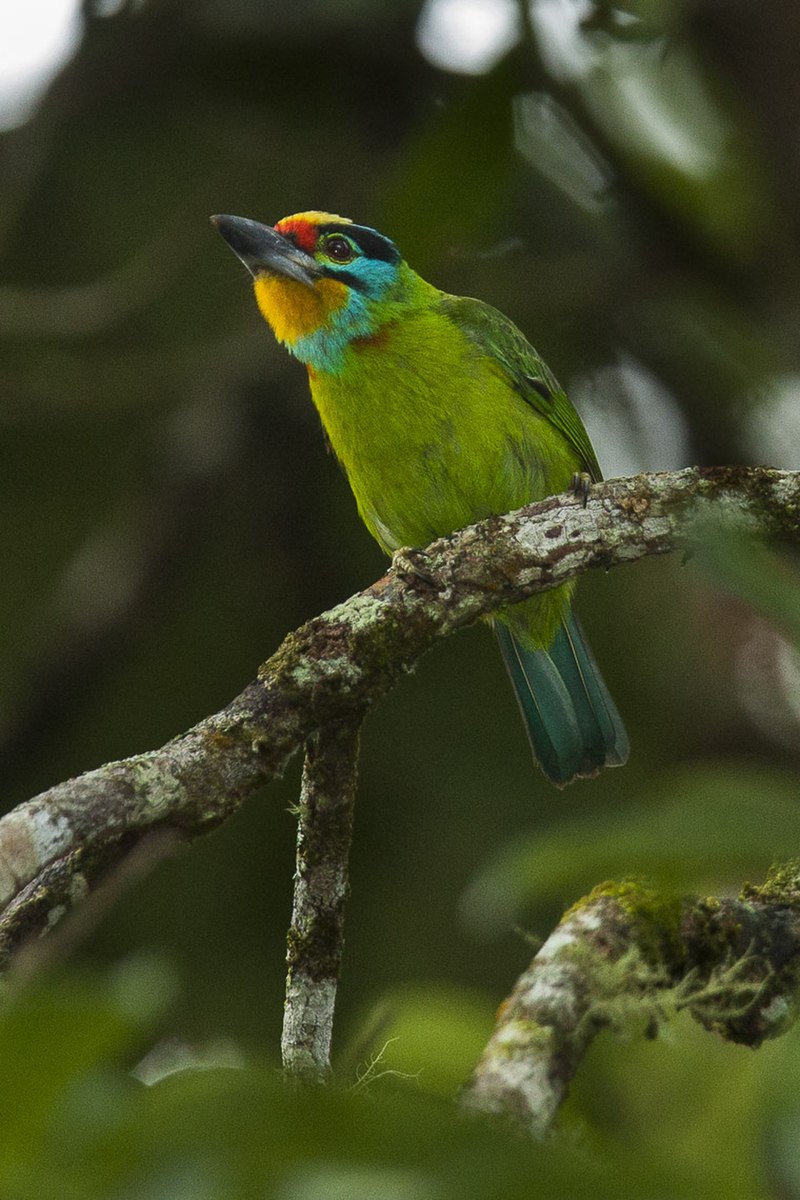
The Black-browed barbet is an Asian bird native to Peninsular Malaysia and Sumatra. It prefers living in forests at altitudes between 600 and 2,000m. The species has a wide distribution range and stable population, which led the International Union for Conservation of Nature (IUCN) to list it as Least Concern on its Red List.
This species was originally described by Salomon Müller under the scientific name Bucco oortii in 1835. Its main features are brownish upperparts with black streaks; white superciliums; yellow cheeks, throat, centre breast, belly and undertail coverts; blue forehead patch extending downwards along both sides of face until lores; red vent area that may extend up onto lower abdomen region slightly forming a scaly patterning; grey legs with orange tinge near feet base over toes webbing areas.
Scientific classification:
| Kingdom | Animalia |
| Phylum | Chordata |
| Class | Aves |
| Order | Piciformes |
| Family | Megalaimidae |
| Genus | Psilopogon |
| Species | P. oorti |
45. Golden-Whiskered Barbet
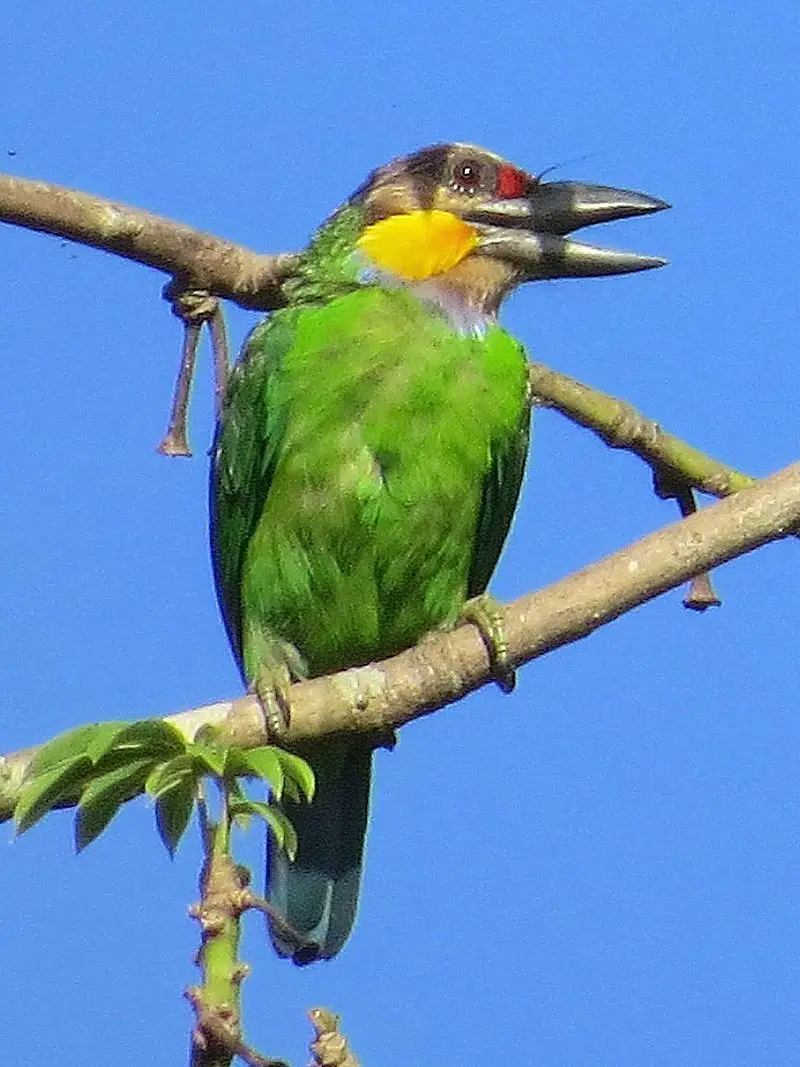
The Golden-whiskered Barbet is a captivating bird native to the western Malay Archipelago.
This species of barbet has vivid green plumage with hues ranging from yellowish-green to dark teal, and its most distinguishing feature is two golden tufts just above its black beak.
It resides mainly in forests up to 1,500 m (4,900 ft) elevation.
Despite it’s wide distribution range across Asia, this beautiful bird remains listed as Least Concern on the IUCN Red List due to its stable population size and lack of threats.
Its striking features make it one of nature’s greatest treasures.
Scientific classification:
| Kingdom | Animalia |
| Phylum | Chordata |
| Class | Aves |
| Order | Piciformes |
| Family | Megalaimidae |
| Genus | Psilopogon |
| Species | P. chrysopogon |
Also Featured In: Birds that Live in Kuala Lumpur,
46. Red-Throated Barbet
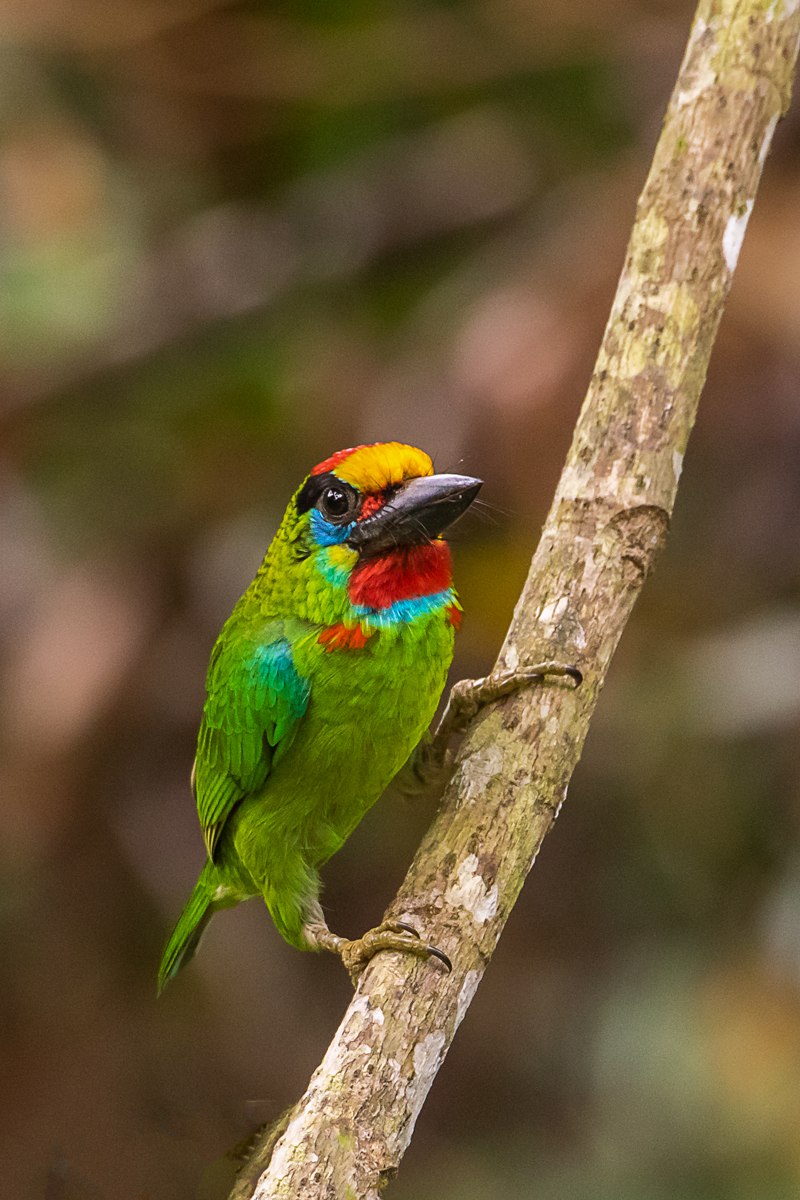
The Red-throated Barbet is a species of bird found in Southeast Asia. It has an unmistakable appearance, with its bright green plumage and red crown, throat and spot on the breast.
This beautiful bird can be seen living in subtropical or tropical lowland forests as well as swampy habitats, although it is becoming increasingly threatened by habitat loss due to human activity.
The male barbet also produces a distinctive call which sounds like “tu tu tu tuk” repeated rapidly several times.
Despite their attractive features, these birds are still at risk from hunting for food or feathers and trapping for domestication purposes – all of which take away vital breeding spots and nesting sites that this species needs to survive.
Scientific classification:
| Kingdom | Animalia |
| Phylum | Chordata |
| Class | Aves |
| Order | Piciformes |
| Family | Megalaimidae |
| Genus | Psilopogon |
| Species | P. mystacophanos |
47. Striated Heron
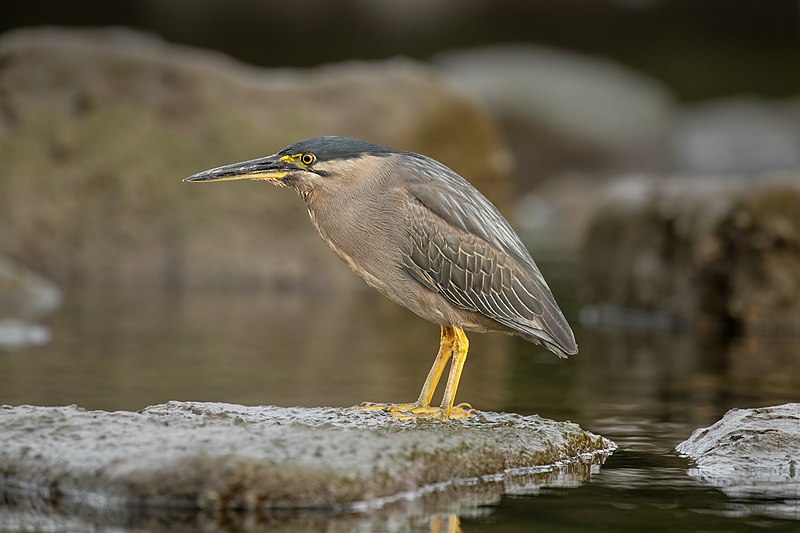
Striated herons are a small species of heron, measuring around 44cm tall. They can be found in wetland areas across the Old World tropics, from west Africa to Japan and Australia as well as South America and the Caribbean.
Striated herons have some interesting behavioral traits that make them unique; they’re mostly sedentary birds who tend to stay close to their breeding habitats throughout most of the year.
During breeding season these little green-backed herons become more active, often performing courtship dances in order to attract mates before nesting together on nearby trees or shrubs.
Scientific classification:
| Kingdom | Animalia |
| Phylum | Chordata |
| Class | Aves |
| Order | Pelecaniformes |
| Family | Ardeidae |
| Genus | Butorides |
| Species | B. striata |
Also Featured In: Rainforest Birds You Should Know, Birds of Karnataka
48. Hooded Pitta
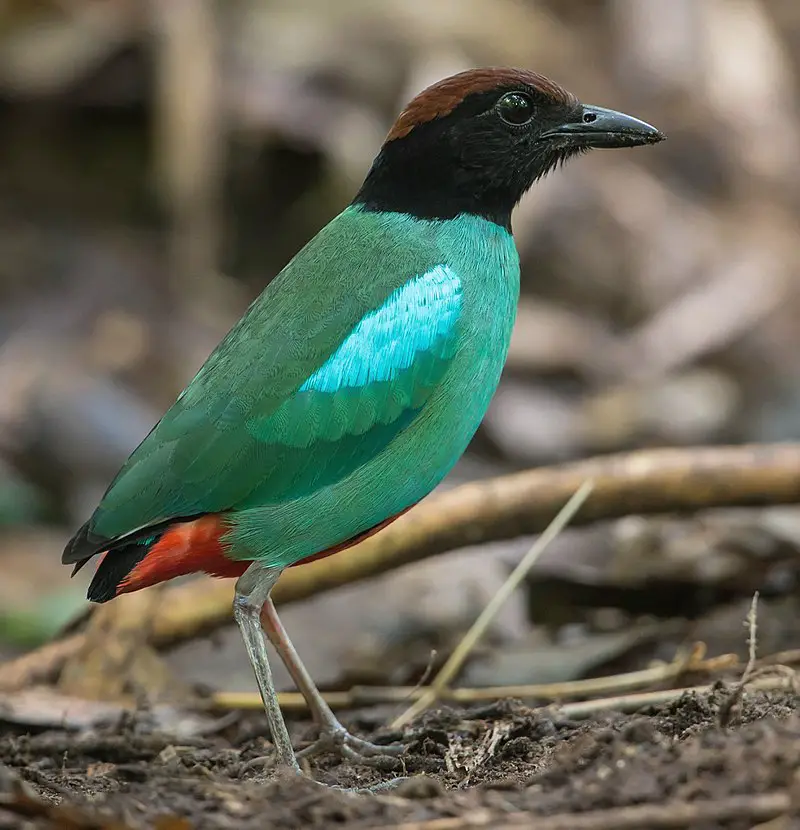
The Hooded Pitta is a beautiful and vibrant bird found in eastern and southeastern Asia, as well as maritime Southeast Asia. This small passerine has bright green feathers with a black head crowned by chestnut-colored plumage.
It feeds mainly on insects and their larvae but can also be seen eating berries from time to time.
During breeding season it inhabits forests of various types such as plantations or cultivated areas; these birds build ground nests usually near water sources so they can stay hydrated throughout the day.
The Hooded Pitta makes for an interesting sight to see out in nature.
Scientific classification:
| Kingdom | Animalia |
| Phylum | Chordata |
| Class | Aves |
| Order | Passeriformes |
| Family | Pittidae |
| Genus | Pitta |
| Species | P. sordida |
Also Featured In: Most Common Birds in Negros, Palawan Island Birds
49. Lesser Yellownape
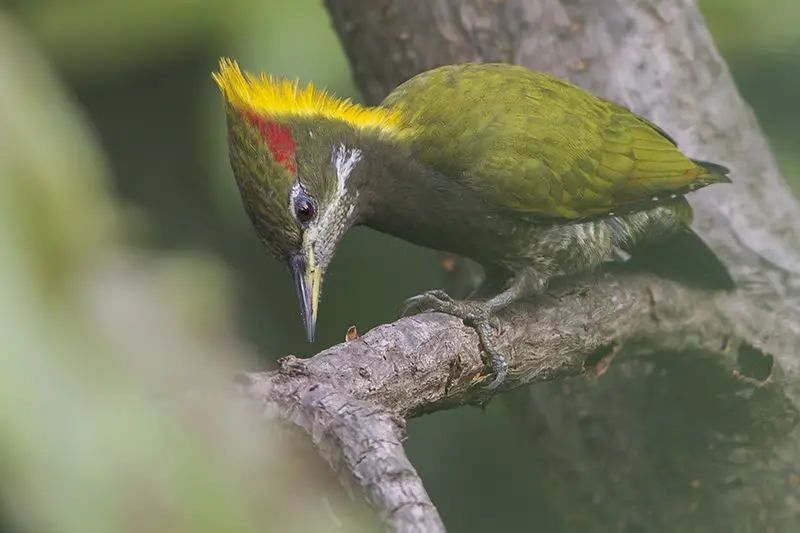
The Lesser Yellownape is a type of woodpecker found in tropical and sub-tropical regions of Asia. It ranges from India to Thailand, Burma, Cambodia, Laos, Indonesia, Malaysia and Vietnam.
Its scientific name is Picus chlorolophus which derives from the greenish color on its crown feathers that contrast against its yellow back.
The bird has strong legs with two toes facing forward and two facing backward for better grip while climbing trees or searching for food among bark crevices.
Its wings are broad enough to aid in rapid flight when needed but short enough for maneuverability within forests where it spends much of its time nesting high up in large branches during breeding season.
With such an extensive range across multiple countries this species is considered relatively common throughout parts of East Asia making it one of the most widely distributed birds there today.
Scientific classification:
| Kingdom | Animalia |
| Phylum | Chordata |
| Class | Aves |
| Order | Piciformes |
| Family | Picidae |
| Genus | Picus |
| Species | P. chlorolophus |
Also Featured In: Birds that Live in Uttarakhand,
50. Grey-Throated Babbler
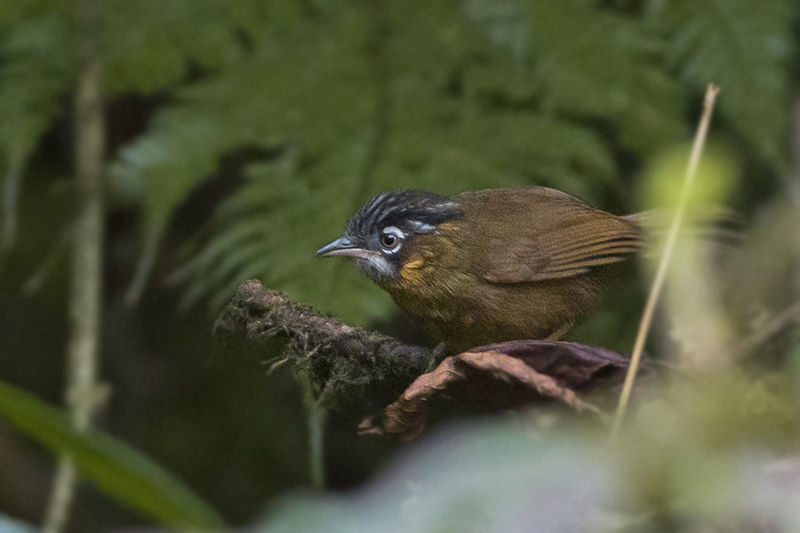
The Grey-throated Babbler is a species of passerine bird belonging to the Old World babbler family Timaliidae. It can be found in Bangladesh, Bhutan, China, India, Indonesia, Laos Malaysia Myanmar Nepal Thailand and Vietnam.
This small songbird prefers subtropical or tropical moist lowland forests as well as moist montane forests for its natural habitats. The grey-throated babbler has been formally described by ornithologists since 1871 and it still continues to thrive in its many environs today.
Its primary diet consists mainly of insects that are caught from foliage and branches while searching among leaf litter on the ground with other members of its flock for food items also forms part of their feeding habits.
Scientific classification:
| Kingdom | Animalia |
| Phylum | Chordata |
| Class | Aves |
| Order | Passeriformes |
| Family | Timaliidae |
| Genus | Stachyris |
| Species | S. nigriceps |
51. Red-Crowned Barbet
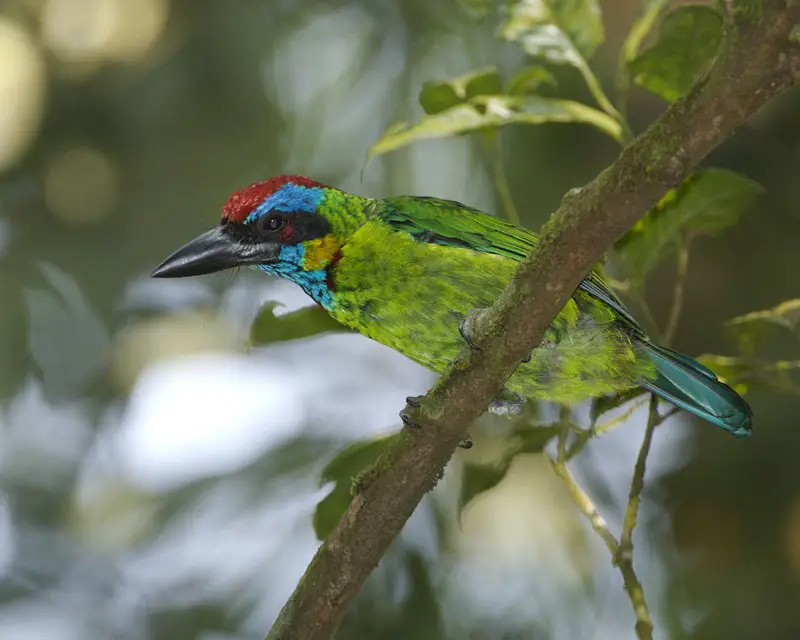
The Red-crowned Barbet is a species of bird found in Brunei, Indonesia, Malaysia, Myanmar, Singapore and Thailand. It has an average length between 24.5�27 cm (9.6�10.6 in) with weights ranging from 99 to 150 grams (3.5 � 5.3 oz).
The barbets are characterized by their bright red crowns which distinguish them from other birds in the Megalaimidae family.
They inhabit moist lowland forests and plantations where they feed mainly on fruits as well as some insects for additional protein sources.
Unfortunately these impressive birds are threatened due to increasing habitat loss caused by human activity such as deforestation and agricultural expansion leading to decreased resources available for sustenance of this species.
Scientific classification:
| Kingdom | Animalia |
| Phylum | Chordata |
| Class | Aves |
| Order | Piciformes |
| Family | Megalaimidae |
| Genus | Psilopogon |
| Species | P. rafflesii |